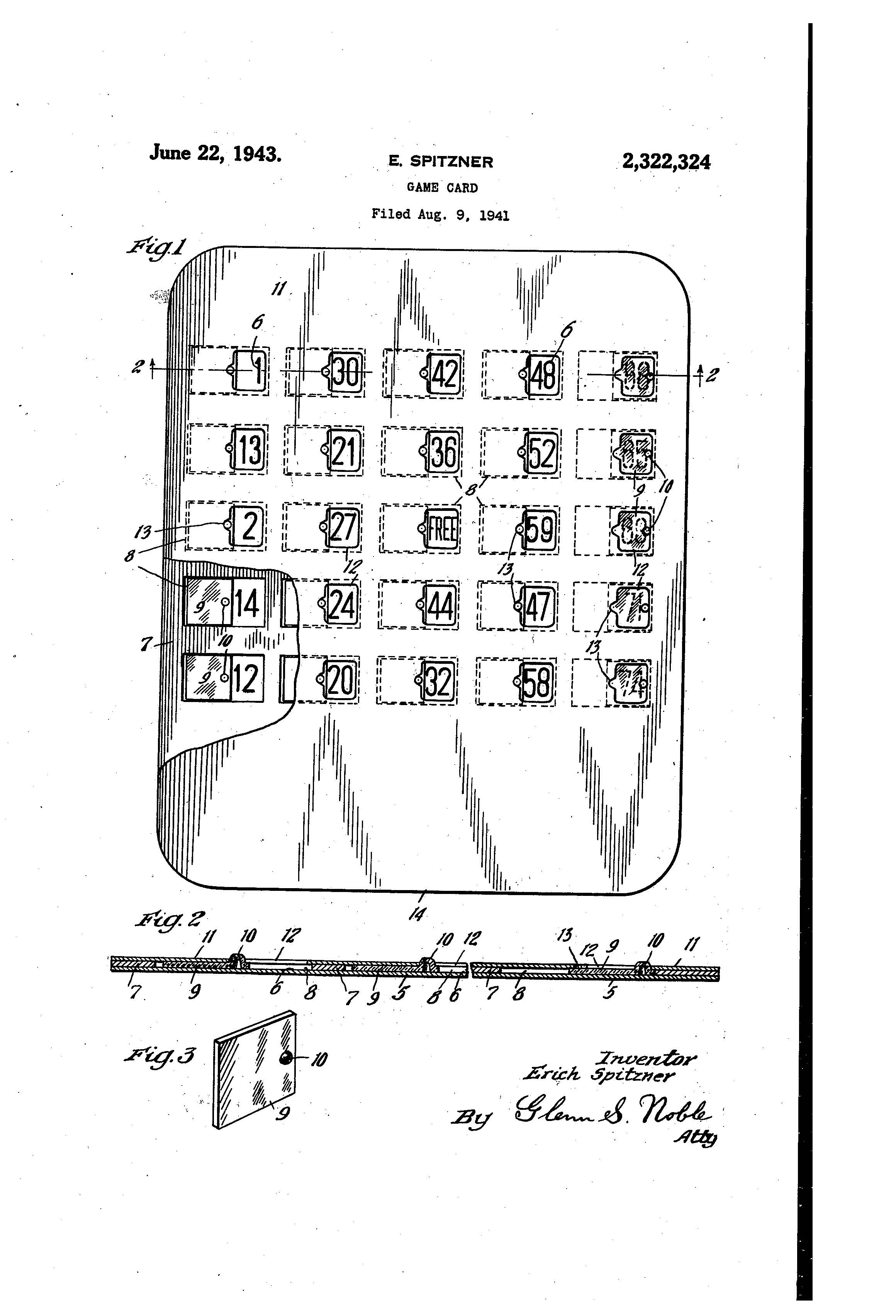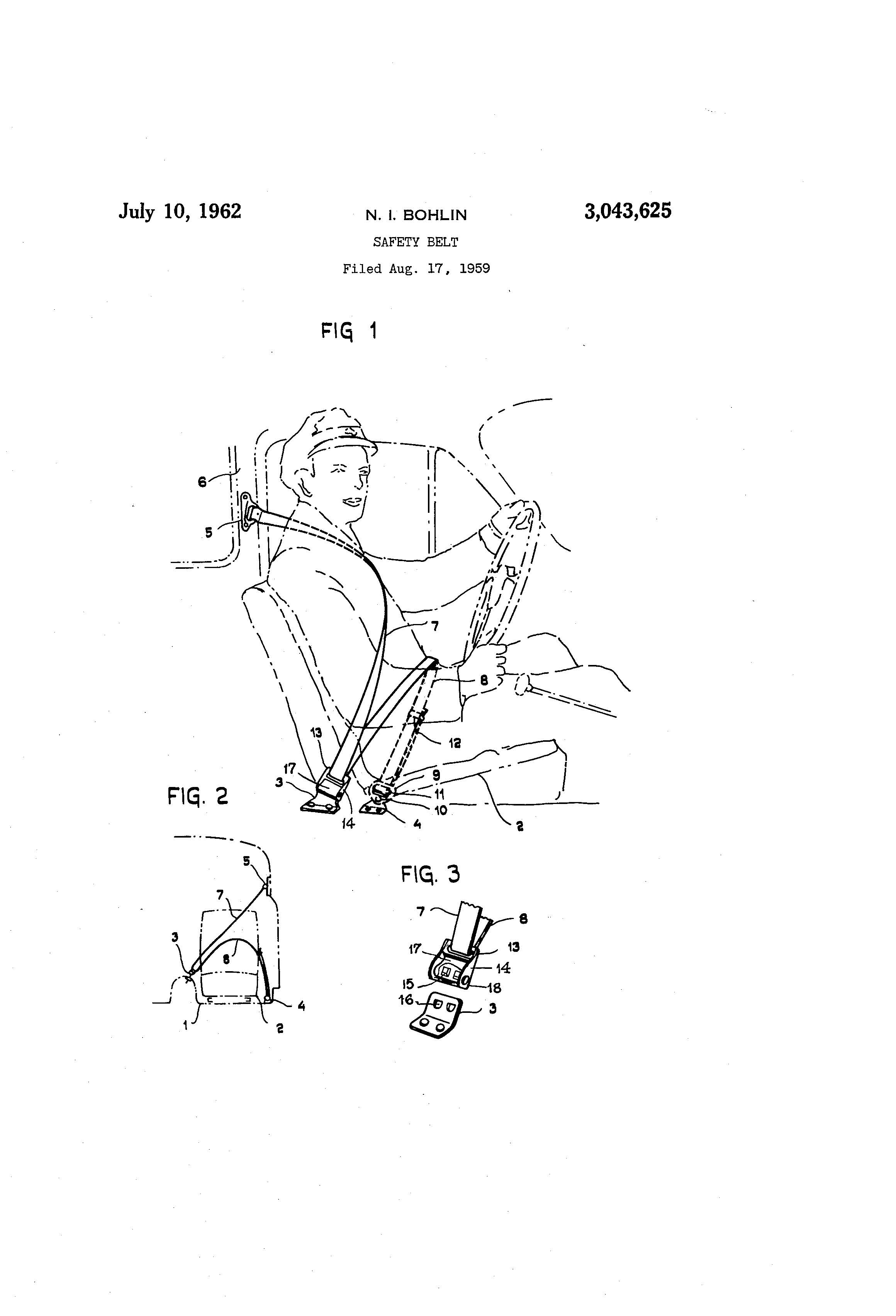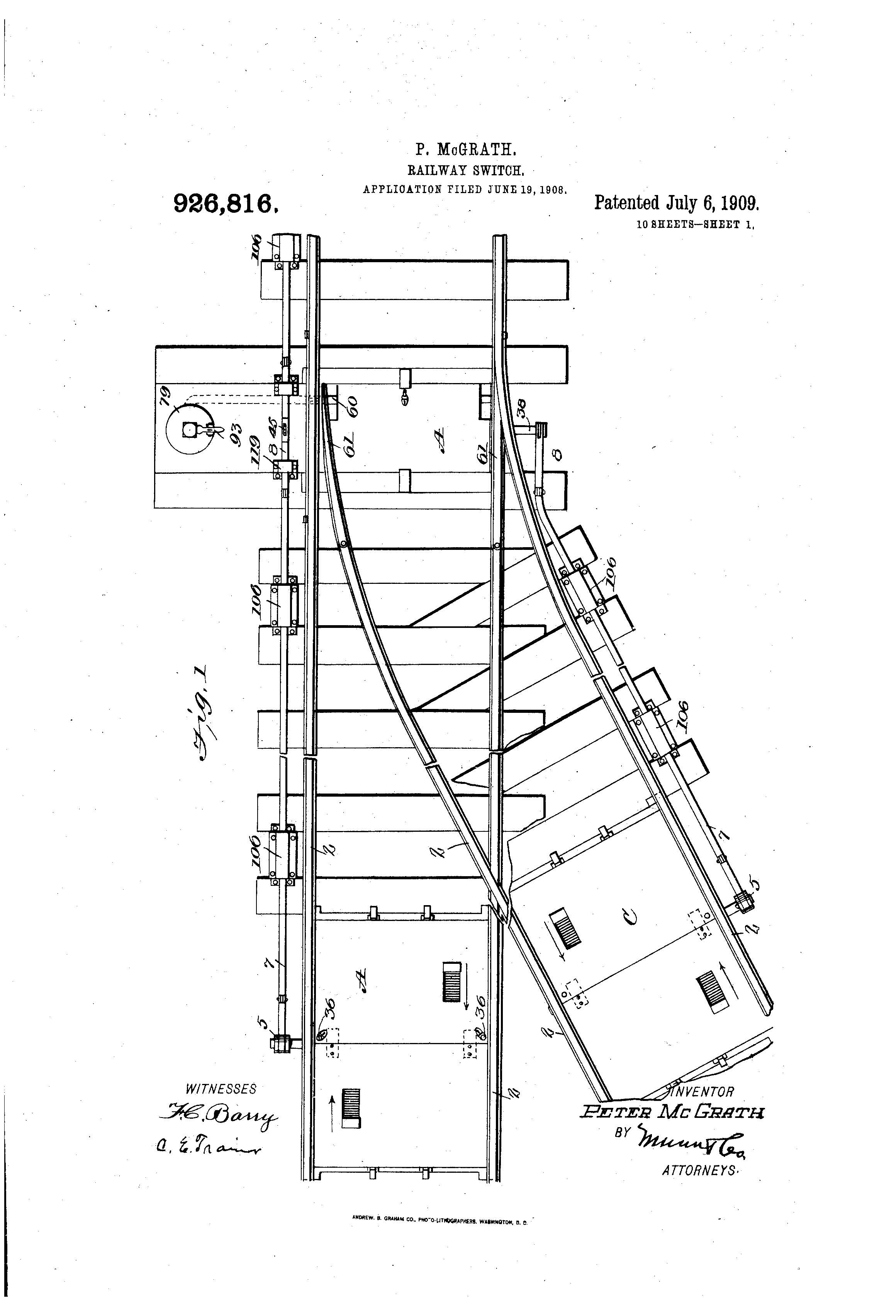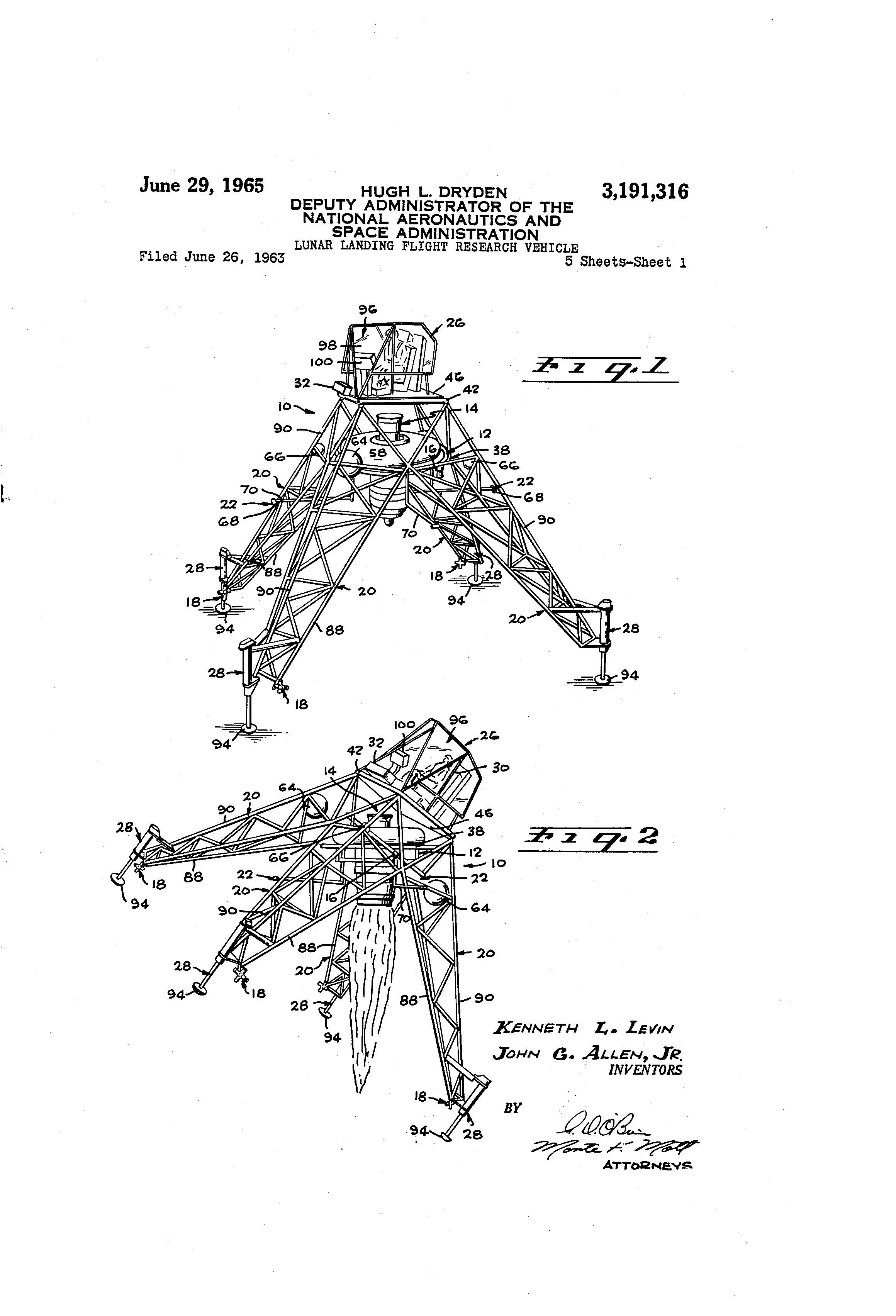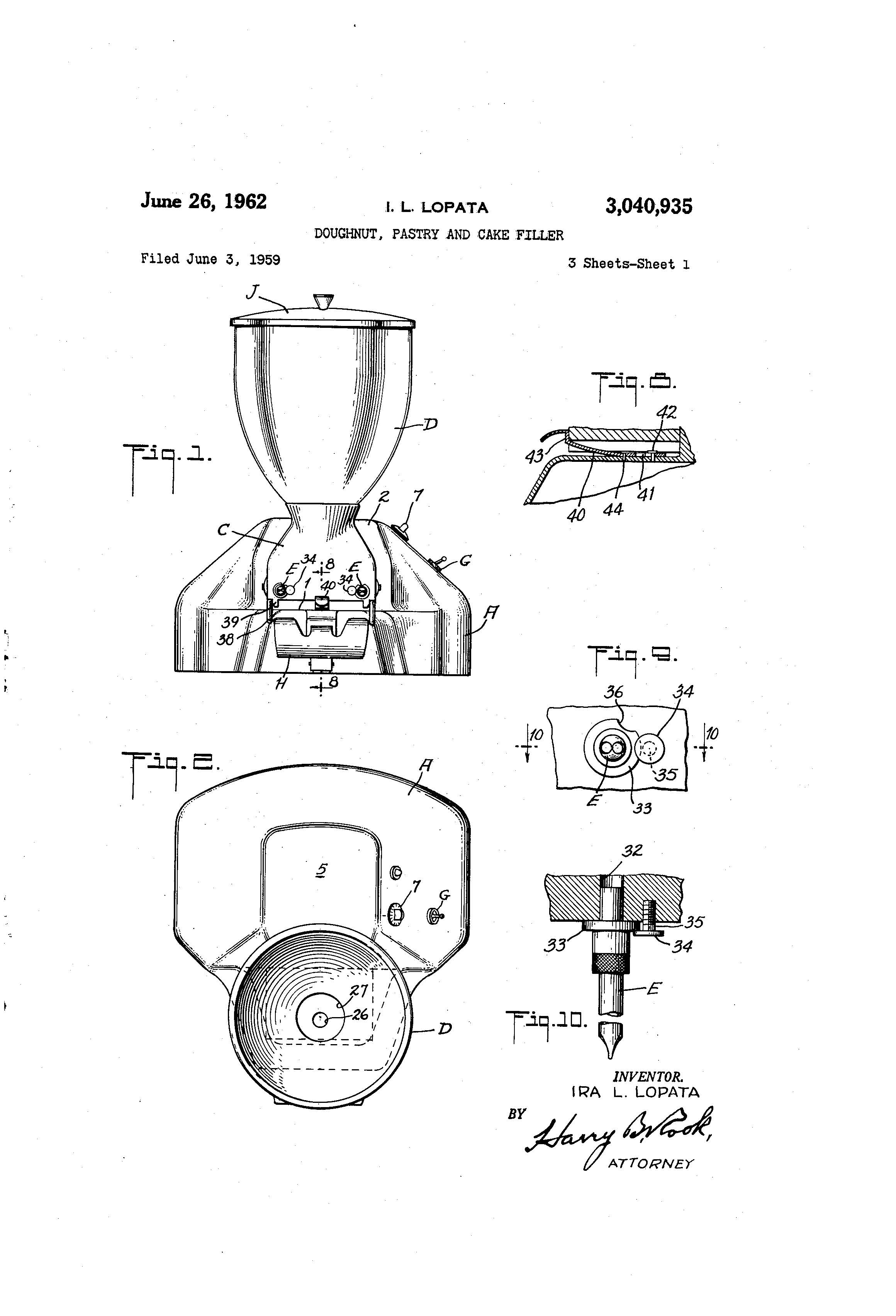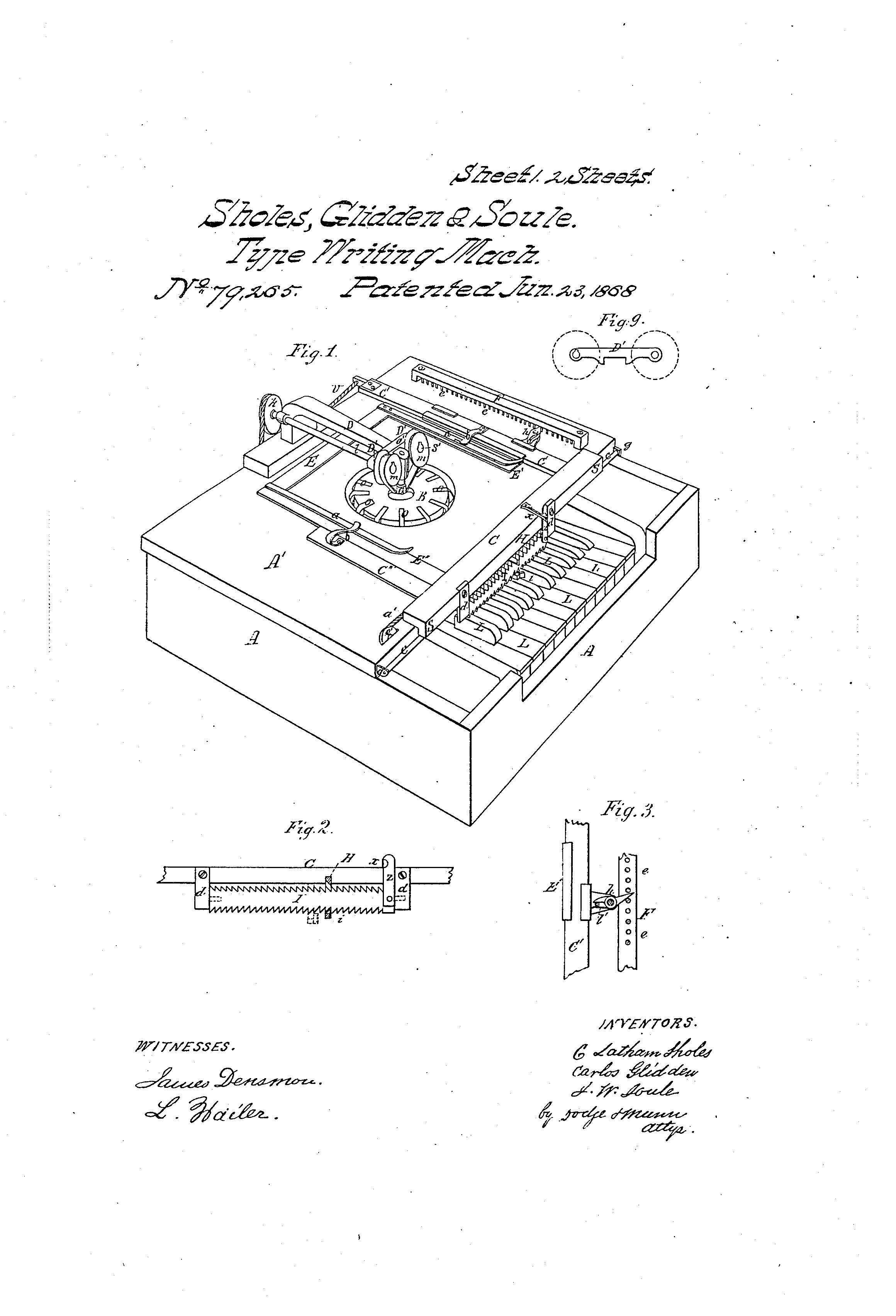Patent of the Day: Safety Belt
Suiter Swantz IP takes a look back at past inventions and inventors with our Patent of the Day.
On this day in 1962, Nils Ivar Bohlin Goteborg was granted U.S. Patent No. 3,043,625 for a SAFETY BELT.
An excerpt from the patent states:
The object of the present invention is to provide a safety belt which independently of the strength of the seat and its connection with the vehicle in an effective and physiologically favourable manner retains the upper as well as the lower part of the body of the strapped person against the action of substantially forwardly directed forces and which is easy to fasten and unfasten and even in other respects satisfies rigorous requirements.
In its broadest aspect, the safety belt according to the invention is characterized in that the top end of the chest strap is connected, in a manner known per se, to a top mounting secured to the body or frame of the vehicle at a point substantially on a level with and substantially behind and on one side of the shoulder of the strapped person, that on either side of the seat of the vehicle a floor mounting is secured to the floor or the frame of the vehicle, that one end of the hip strap is connected to the floor mounting which is located on the same side as the top mounting, and that the chest strap and the hip strap form a continuous sling which is detachably connected to the other floor mounting. The chest strap may pass from the top mounting either over a shoulder or below the corresponding arm of the person. The length of the sling forming the chest strap and the hip strap is suitably adjustable.
Suiter Swantz IP is a full-service intellectual property law firm, based in Omaha, NE, serving all of Nebraska, Iowa and South Dakota. If you have any intellectual property questions or need assistance with any patent, trademark or copyright matters and would like to speak to one of our patent attorneys please feel free to contact us.
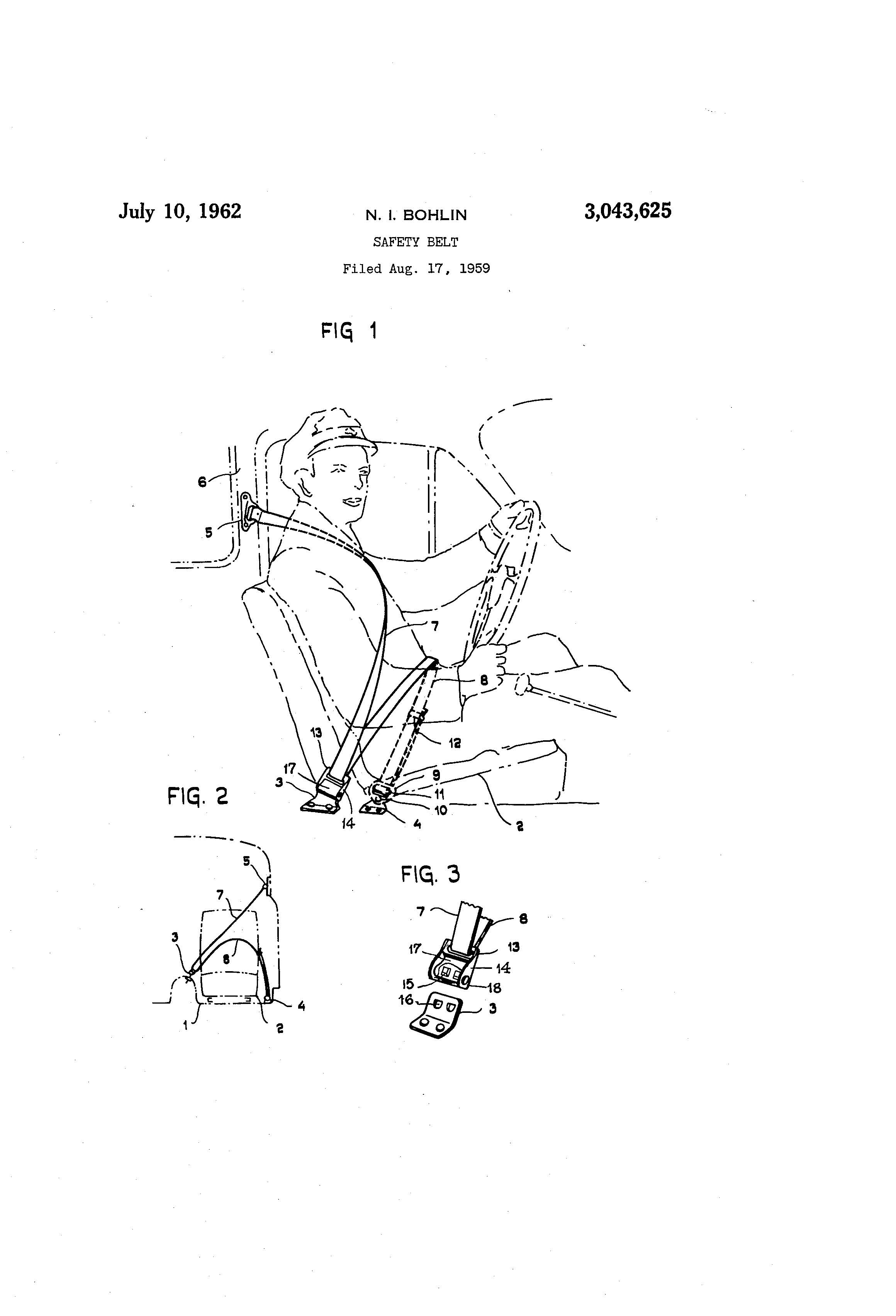
Patent of the Day: Means for Uniting a Screw with a Driver
Suiter Swantz IP takes a look back at past inventions and inventors with our Patent of the Day.
On this day in 1936, Henry F. Phillips, was granted U.S. Patent No. 2,046,837 for a MEANS FOR UNITING A SCREW WITH A DRIVER.
An excerpt from the patent states:
In contrast to these structural characteristics, of identical form, the elements constituting my present form of composite invention are constructed along complementary angular lines to effect a positive wedging engagement when the screw and driver are joined together in operative relation, instead of teh driver merely occupying the space defined by the recess as is the case in the aforesaid separate screw and driver inventions.
Such failure of the slotted screw to retain the blade-driver, especially in power driven operations, is not only dangerous to the operator, but is likewise, always injurious to the work, especially in the construction of furniture and other types of work wherein the elements to which the screws are being applied become badly mutilated when the power driver leaves the slot, usually during high speed operation of the driver which is most difficult to stop in time to prevent injury to the work.
Accordingly, therefore, the principal object of my invention is to overcome all of the foregoing objectionable features in the operation of a screw by a driver, by providing a composite structure as aforesiad, wherein a screw may be first secured to the end of a driver, and presented tot he work to be dealt with without the inconvenience of the screw dropping from the end of the driver. The screw is also centralized with respect to the driver, not only during its starting operation but also throughout its entire advancement, and during such advancement, the driver is locked in its proper centralized working relation with the screw, and any danger of its leaving the screw is thus entirely eliminated. Another object of the invention is the particular angular formation of the walls of the recess in the screw with respect to the angular formation of the working end or bit of the driver to establish a wedging engagement between the two when united. This same angular formation of both elements is especially designed to also create what might be termed a camming action during the approach of these angular faces toward one another with respect to any substances which might have become lodged within the recess of the screw. It has been found by experiment that a downward thrust of the bit into the recess will instantly dislodge any substance within the recess by causing it to move upwardly and outwardly over the walls of the recess.
Still another object of the invention is the provision of angular faces in such relation to each other that the wedging engagement may be obtained by the mere gravitation of the driver and the operator’s hand applied to it. The angular faces, in other words, are so related to each other that even a slight downward thrust of the driver into the recess will cause a firm wedged engagement between the two elements.
Another feature of the invention is that the same gripping relation, as aforesaid, may be accomplished in screws which are provided with recess having any number of grooves, weather diametrically opposed or not, to receive in wedged engagement, drivers with a corresponding number of vanes. I also wish to point out that my invention provides means in the grooves which are diametrically opposed, to receive the ordinary flat blade-driver such as is now commonly known and used. These blade-drivers may or may not be tapered at their lowermost ends for operative engagement with said grooves. This particular feature enhances the utility of the screw by reason of the fact that any blade-driver may also be used to actuate the screw.
A still further object of the invention accomplished by this specific angular relation between the driver and the screw is that only two sizes of my improved form of the driver are needed to fit all types of screws in sizes ranging from number 5 to 16 inclusive, instead of six or more sizes of the slotted drivers required to fit the same range of sizes of slotted screws.
Suiter Swantz IP is a full-service intellectual property law firm, based in Omaha, NE, serving all of Nebraska, Iowa and South Dakota. If you have any intellectual property questions or need assistance with any patent, trademark or copyright matters and would like to speak to one of our patent attorneys please feel free to contact us.
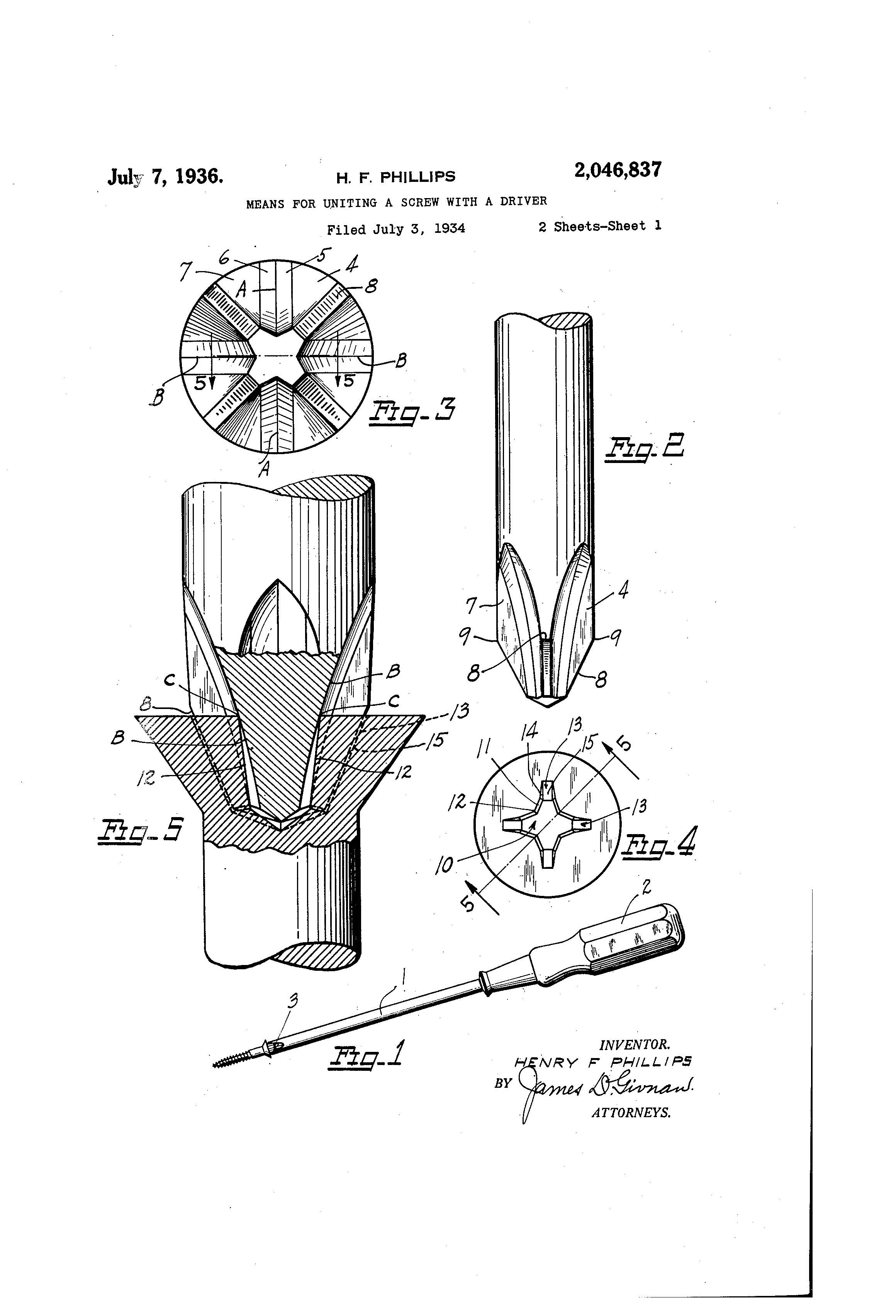

Patent of the Day: Railway-Switch
Suiter Swantz IP takes a look back at past inventions and inventors with our Patent of the Day.
On this day in 1909, Peter McGrath, was granted U.S. Patent No. 926,816 for a RAILWAY-SWITCH.
An excerpt from the patent states:
I claim:
1. The combination with the switch, of a shaft arranged transversely of the switch and connected therewith to operate the switch when the shaft is oscillated, a locking device for the switch in connection with the shalt, and means on each side of the switch adapted to be operated by a moving train for throwing the switch, said means comprising a shaft arranged transversely of the track, a connection between the said shaft and the first named shalt whereby they will oscillate in unison, rods arranged transversely of the shaft, and in parallel relation, a carriage slidable on the rods, springs for retaining said carriage at one end of the rods, the carriage being provided with a slot therethrough, and an operating arm pivoted in the slot, the said arm having a horizontal portion lying within the slot, and a vertical portion for engagement by a moving train, a spring for retaining the arm in normal position, and means whereby the movement of the carriage will oscillate the shaft.
2. The combination with the switch, of a shaft arranged transversely of the switch and connected therewith to operate the switch when the shaft is oscillated, a locking device for the switch in connection with the shaft, and means on each side of the switch adapted to be operated by a moving train for throwing the switch, said means comprising a shaft arranged transversely of the track, a connection between said shaft and the first named shalt whereby they will oscillate in unison, rods arranged transversely of the shaft and in parallel relation, a carriage slid able on the rods, springs for retaining said carriage at one end of the rods, a spring supported arm pivoted to the carriage for engagement by mechanism on a moving train, and means whereby the movement of the carriage will oscillate the shaft.
3. The combination with the switch, of a shaft arranged transversely of the switch and connected therewith to operate the switch when the shaft is oscillated, a locking device for the switch in connection with the shaft, and means on each side of the switch adapted to be operated by a moving train or throwing the switch, said means comprising a shaft arranged transversely of the track, a connection between the said shaft and the first named shalt whereby they will oscillate in unison, a carriage slidable transversely of the last named shaft, an operating arm pivoted to the carriage, and adapted for engagement by means of a moving train whereby to move the carriage in one direction, a spring for returning the carriage, and means where by the movement of the carriage will oscillate the shaft.
Suiter Swantz IP is a full-service intellectual property law firm, based in Omaha, NE, serving all of Nebraska, Iowa and South Dakota. If you have any intellectual property questions or need assistance with any patent, trademark or copyright matters and would like to speak to one of our patent attorneys please feel free to contact us.
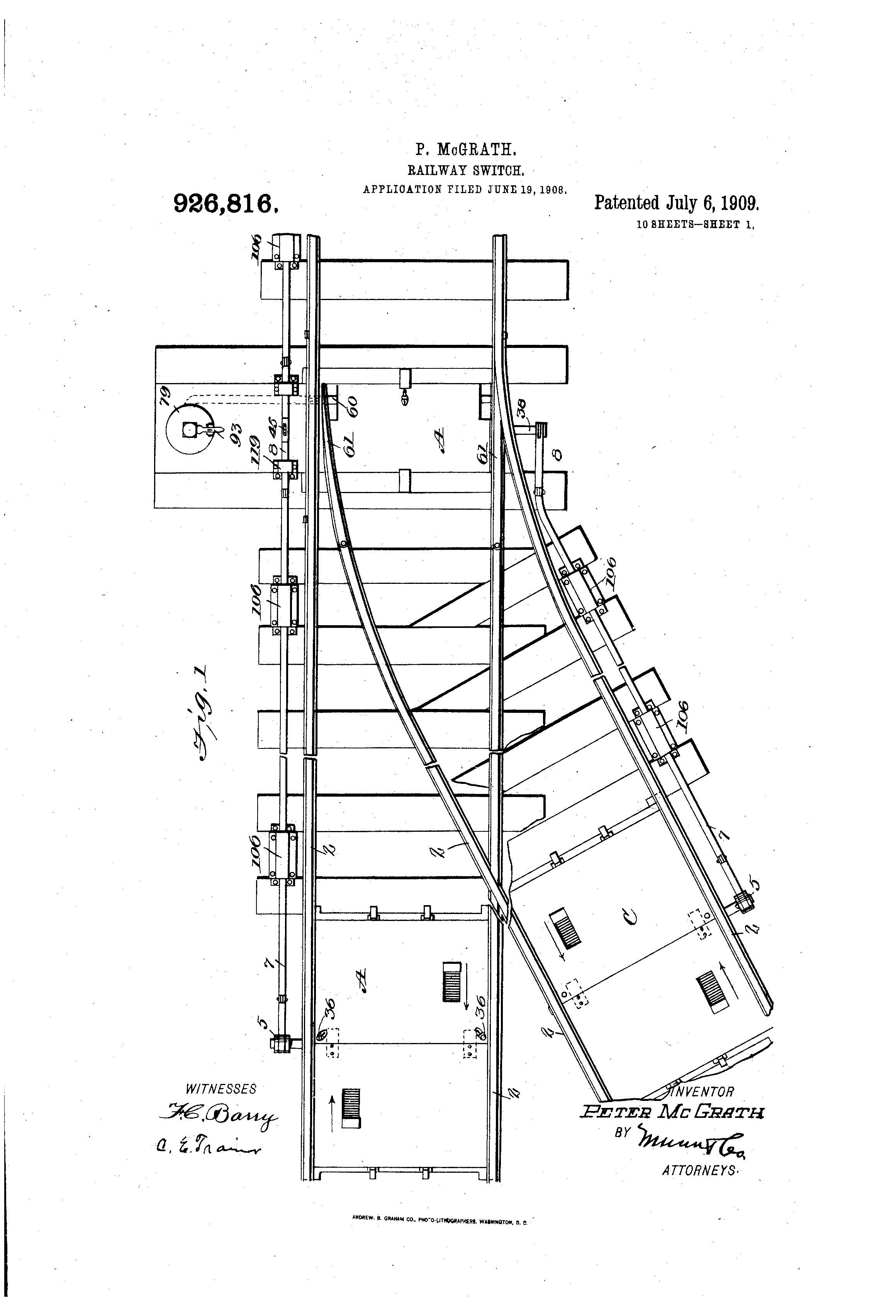
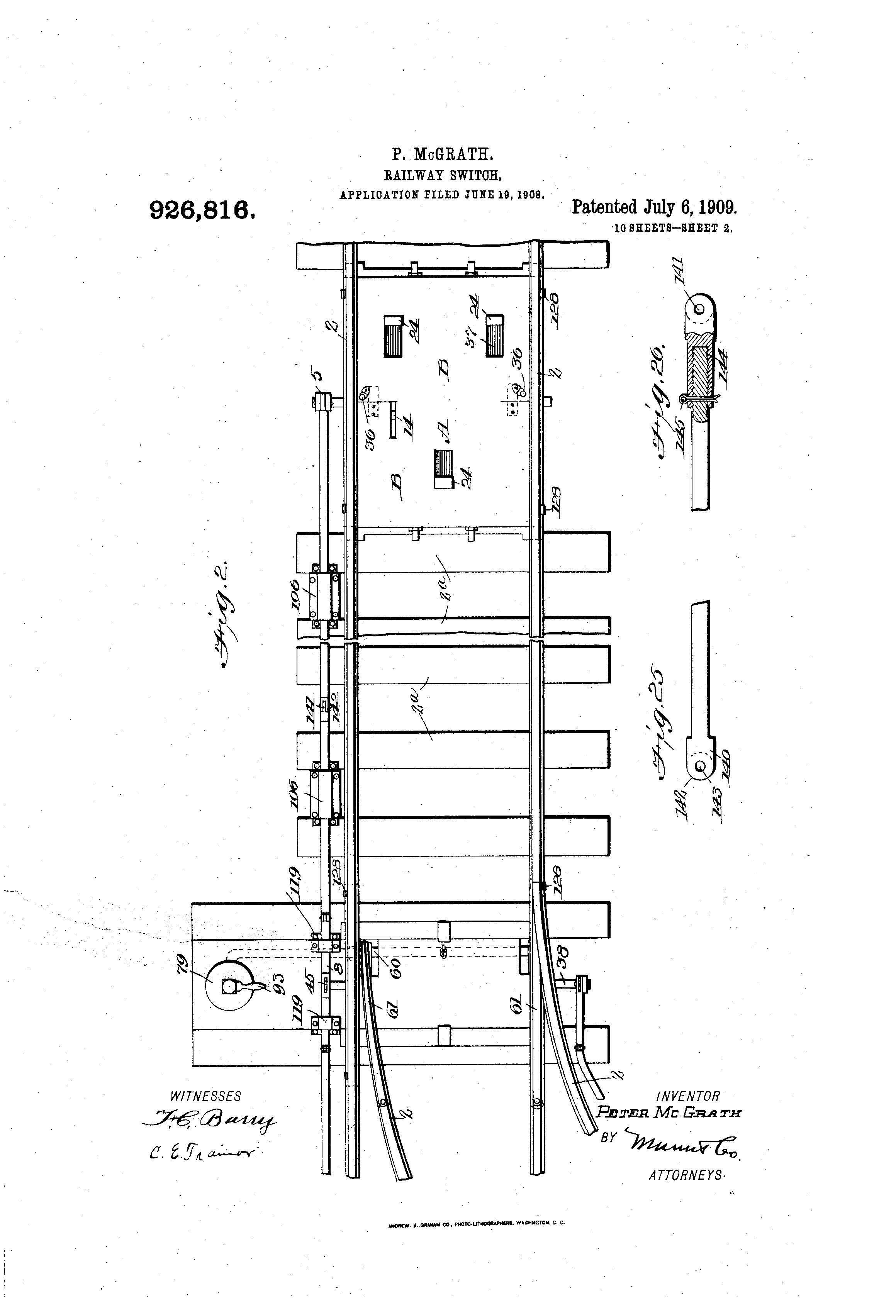
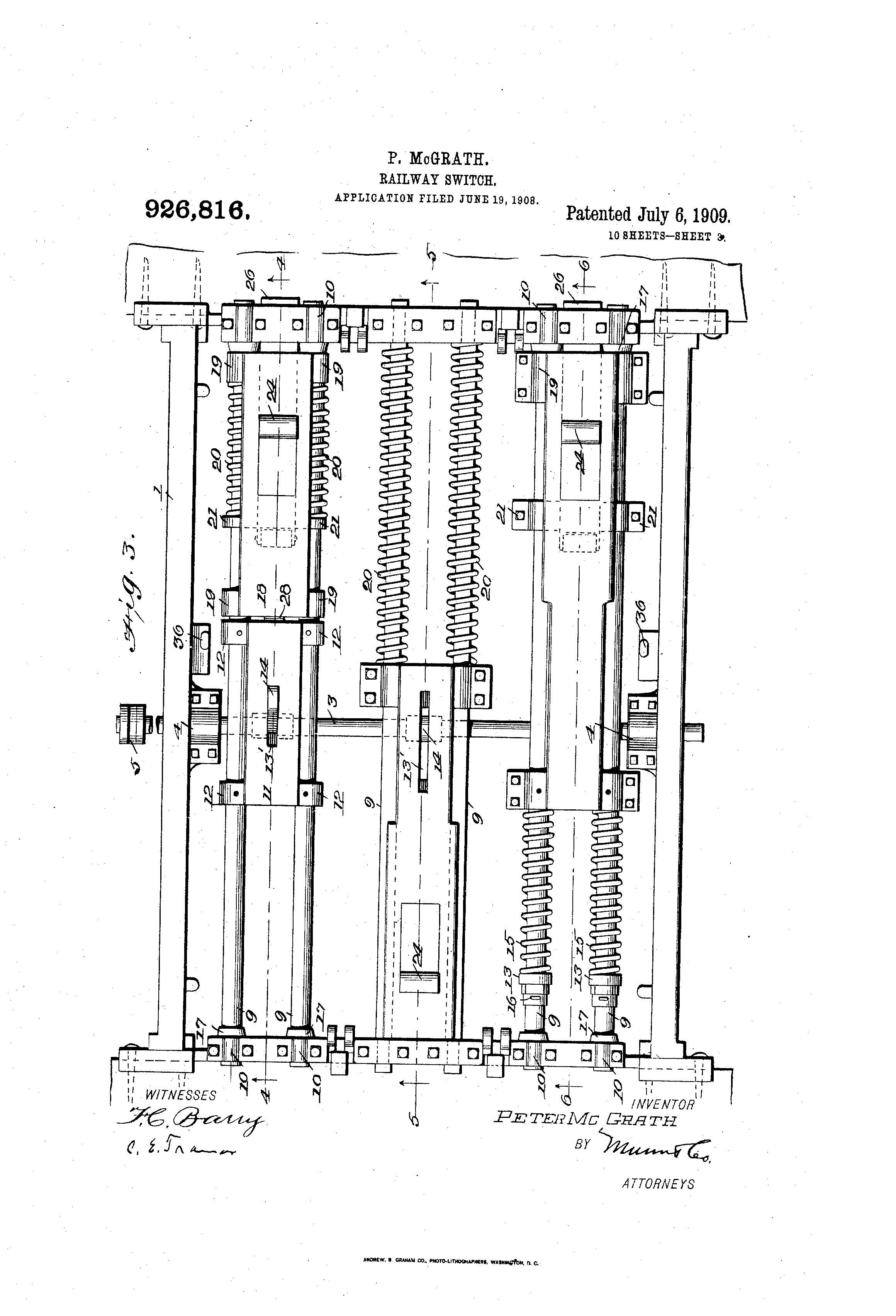
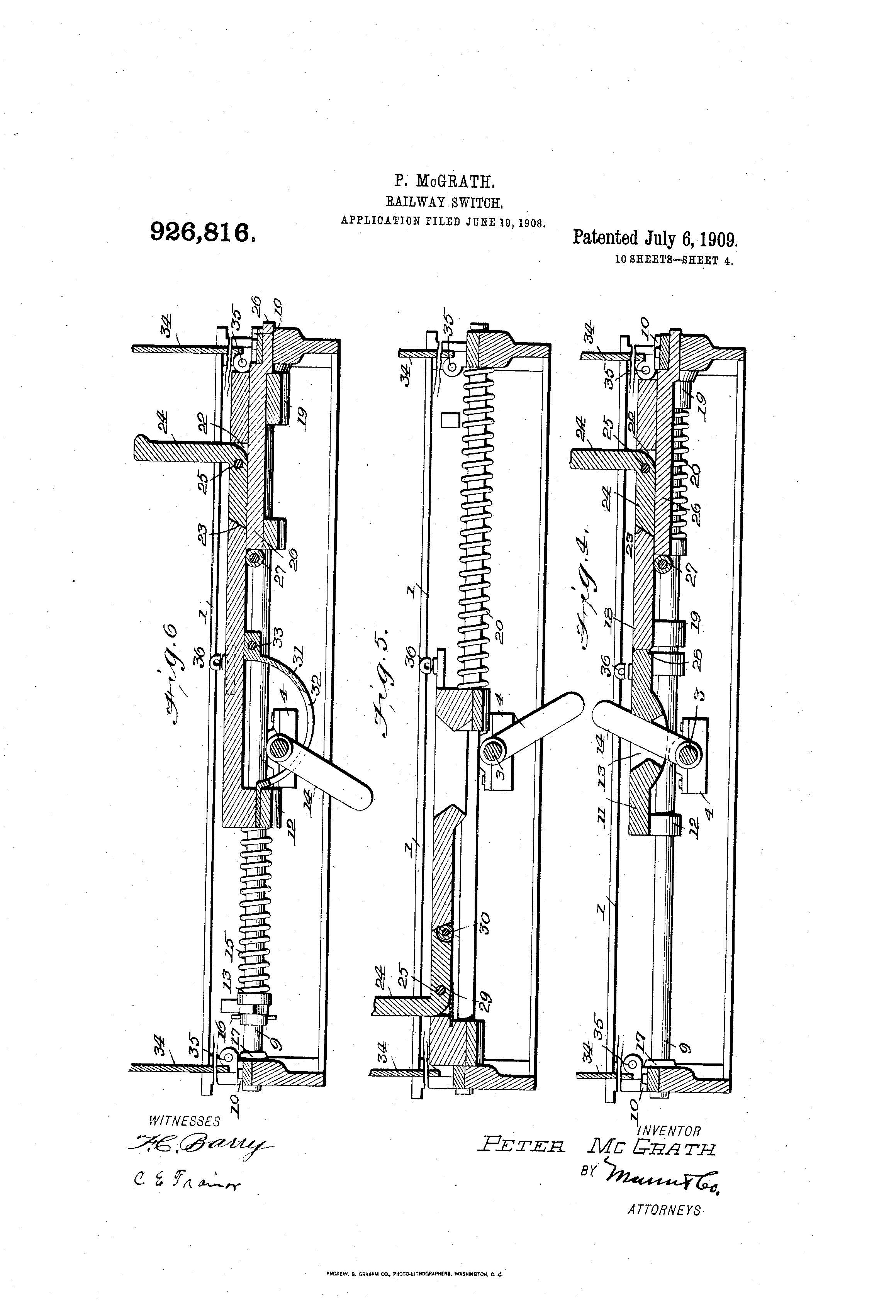

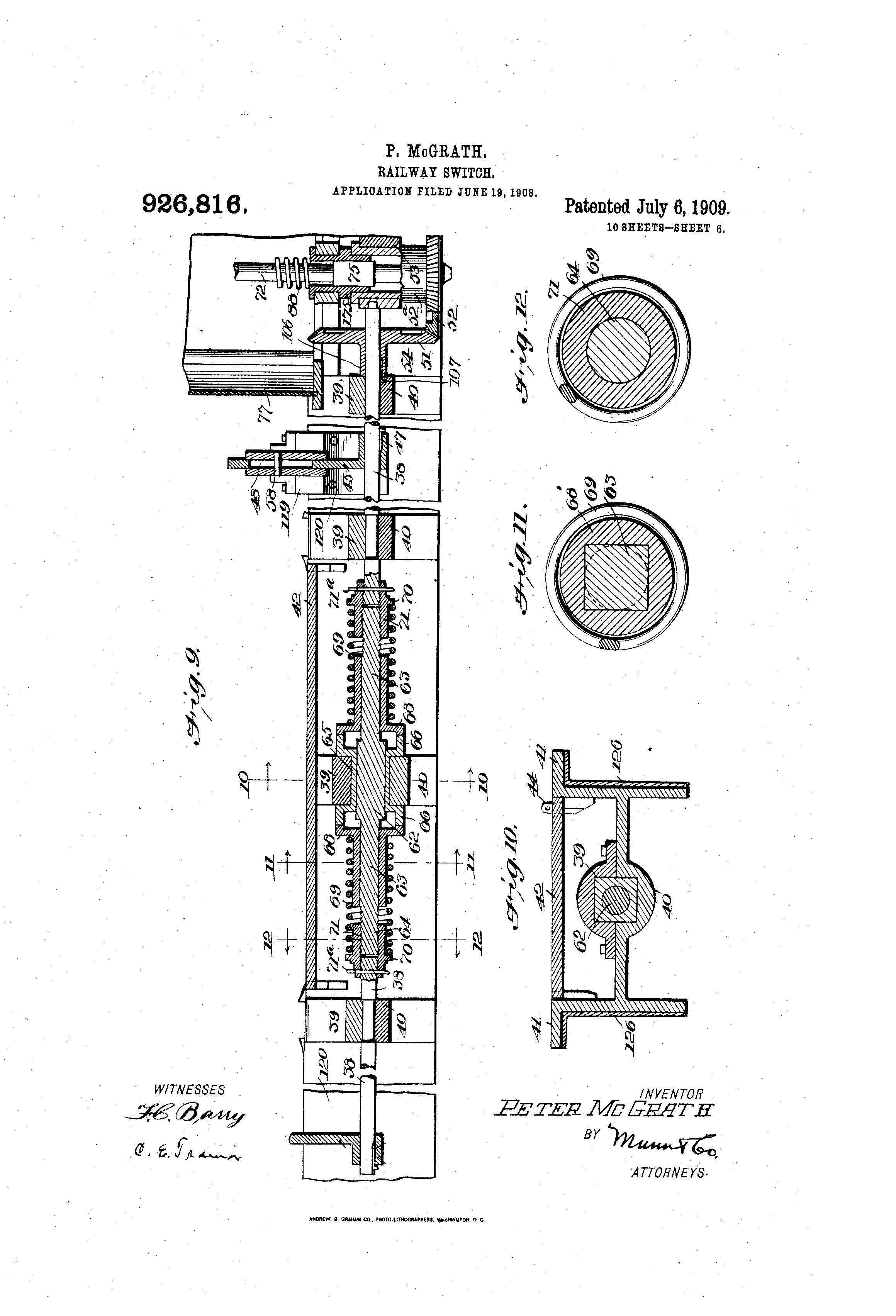
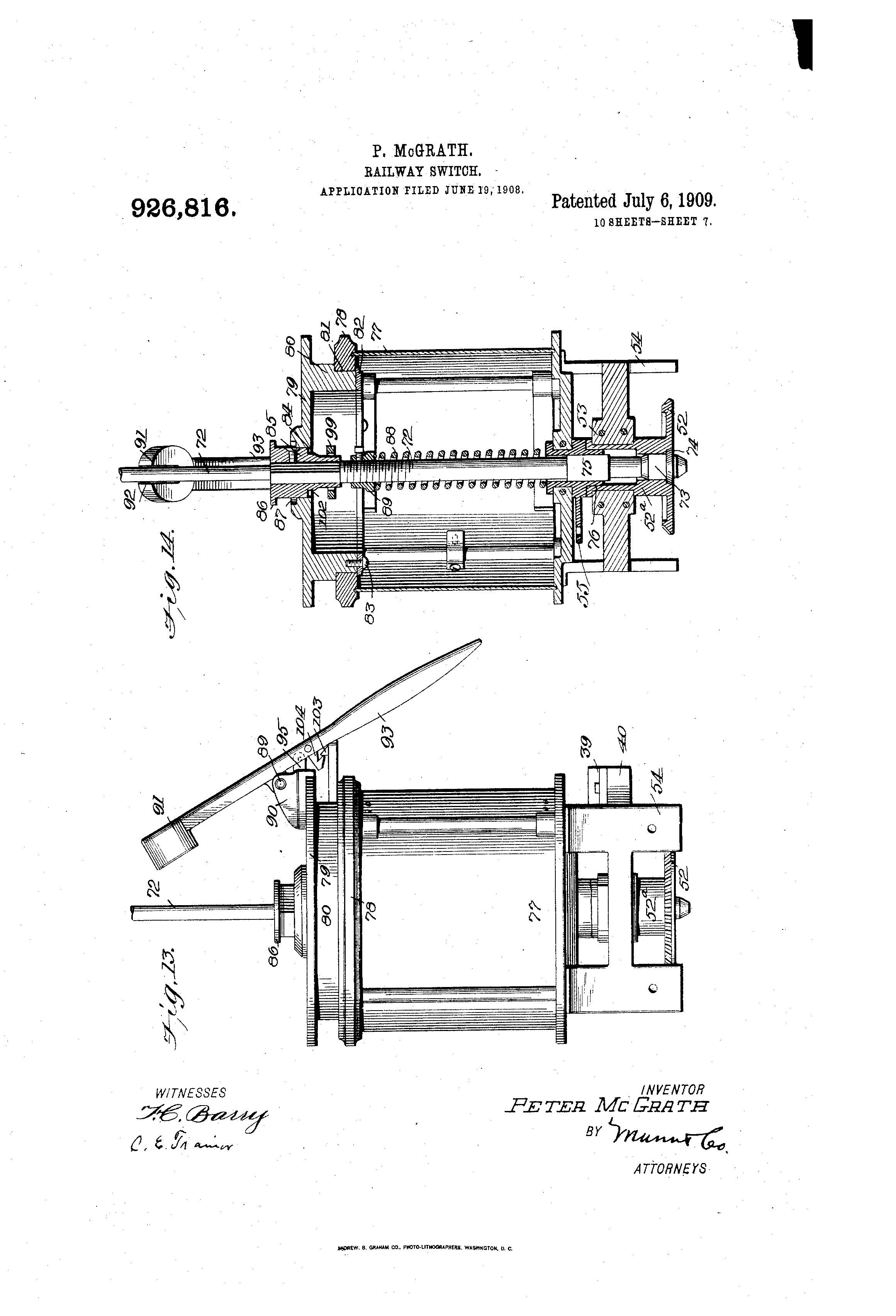
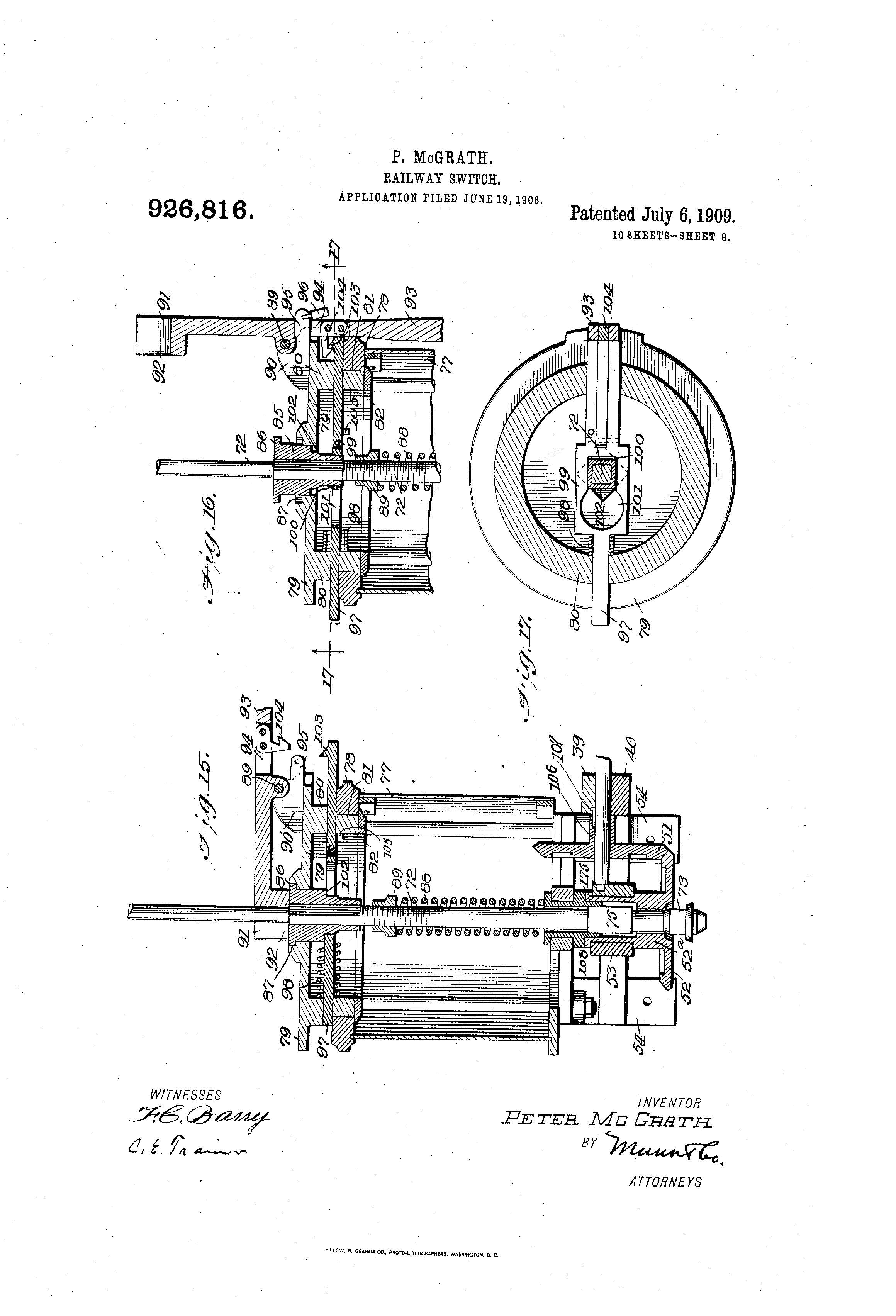
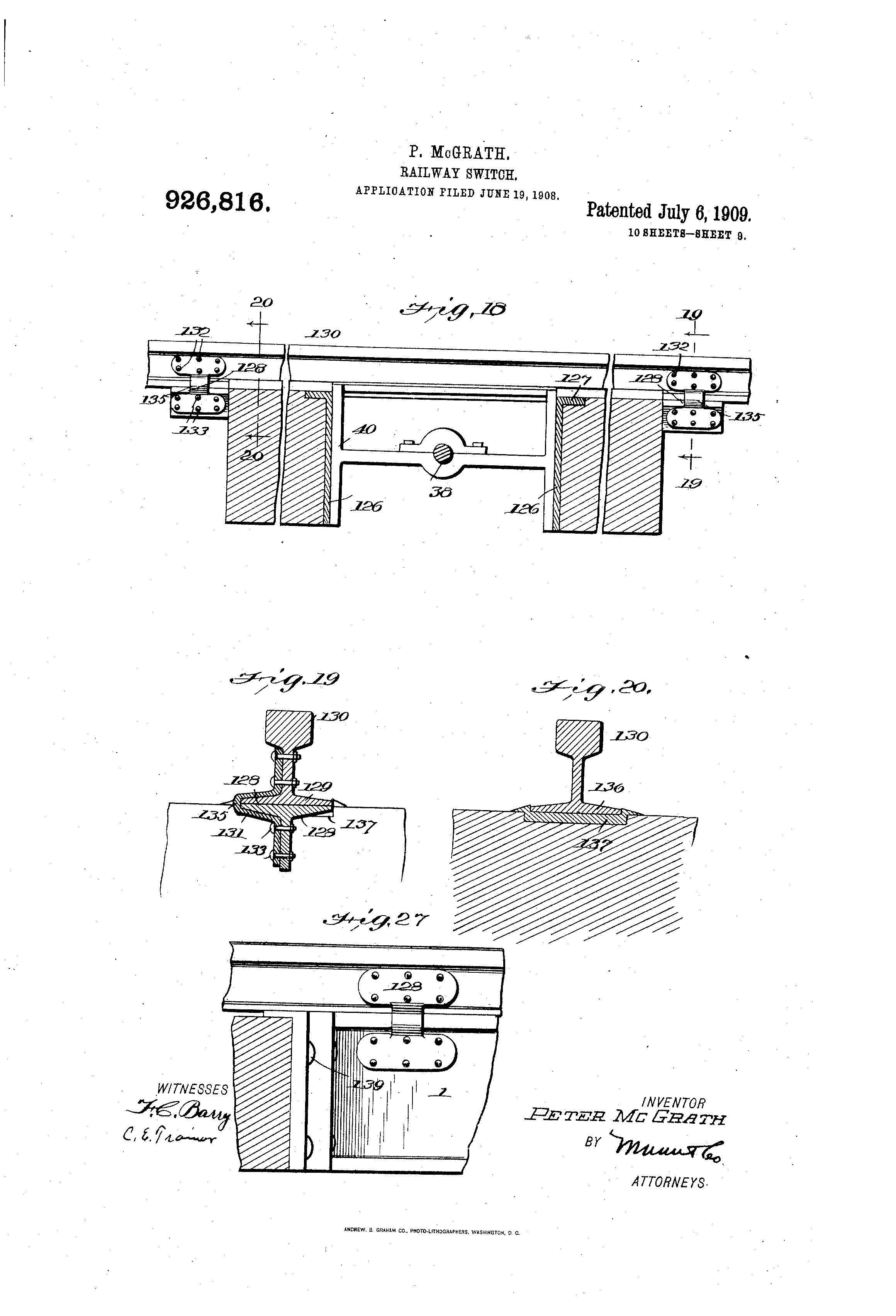
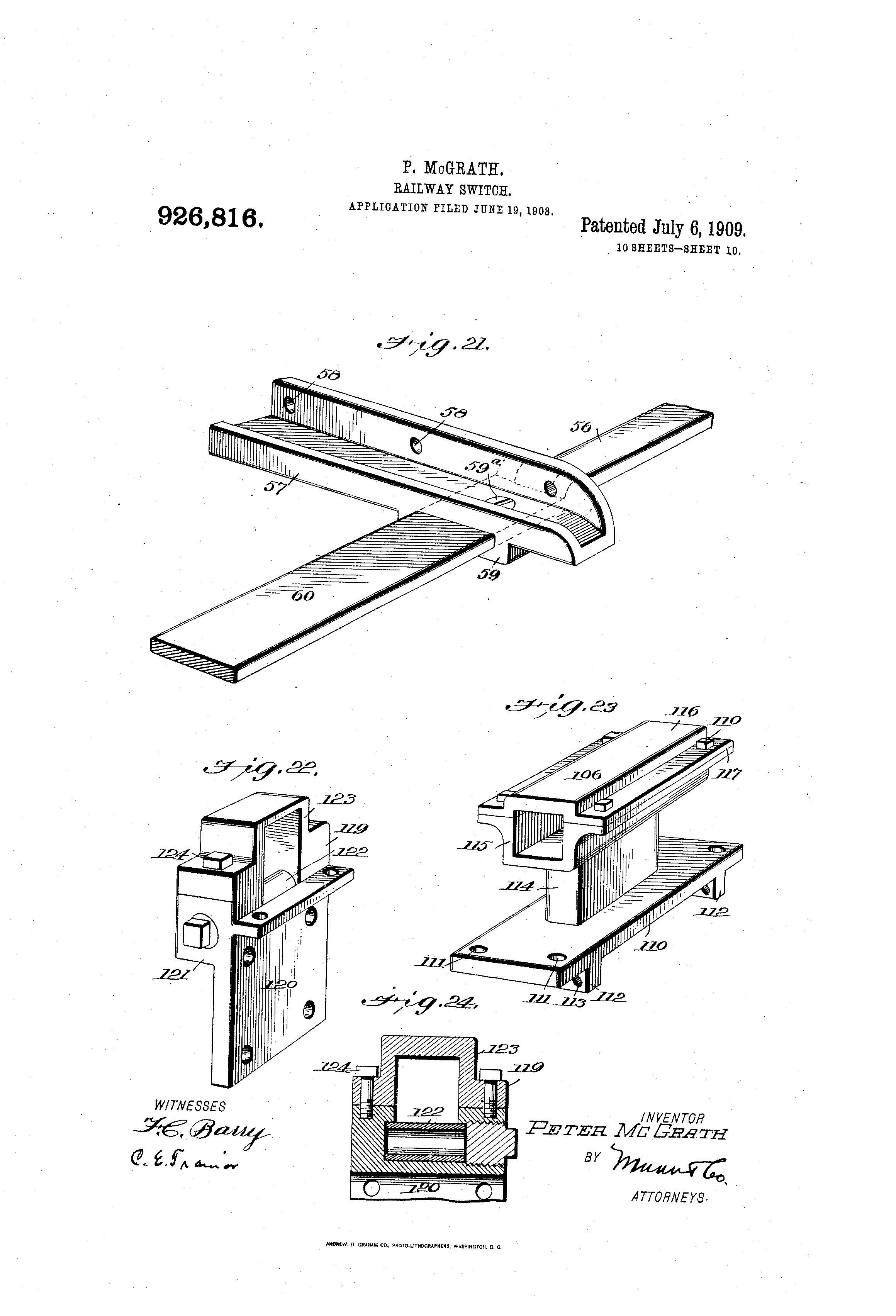
Patent of the Day: Eyelash Curler
Suiter Swantz IP takes a look back at past inventions and inventors with our Patent of the Day.
On this day in 1955, Charles M. Palmer, was granted U.S. Patent No. 2,712,317 for an EYELASH CURLER.
An excerpt from the patent states:
This invention is directed to eyelash curlers and more particularly to the front component of a rubber pad clamping jaw having its rear component slidably guided by spaced vertical shanks of a wire frame to which a crank portion of an actuating handle is pivotally connected and also operatively associated with the rear component of the jaw to actuate the latter on displacement of the handle towards or away from an actuate bar anchored to the upper portions of the shanks. Specifically hitherto the lower portion of the front component was pivotally retained against removal on a fulcrum pin carried by the crank, thus precluding complete access to the inside surfaces of both the front and rear components for cleaning. Also in production and particularly during stamping operations, slight increments in length occur in the front component due to variations in temper of the metal thus providing difficulties in assembly. The primary object is to removably mount the front component on the fulcrum pin pivotally sustaining the rear component by interrupting the offset tail portion of the front component with a slot leading to the lower edge of the tail portion and in communication with a semi-circular opening to define a fork constituted by a pair of spaced tines adapted to removably straddle the fulcrum pin received into the semi-circular opening characterizing a bearing pivotally retained on the fulcrum pin. As a further object the invention comprehends the utilization of a longitudinally shiftable pin displaceable relative to the crank to provide a relief gap between the crank and the rear component for conveniently removing the front component from the fulcrum pin or permit quick insertion of the front component in the rear component for prompt assembly.
Suiter Swantz IP is a full-service intellectual property law firm, based in Omaha, NE, serving all of Nebraska, Iowa and South Dakota. If you have any intellectual property questions or need assistance with any patent, trademark or copyright matters and would like to speak to one of our patent attorneys please feel free to contact us.
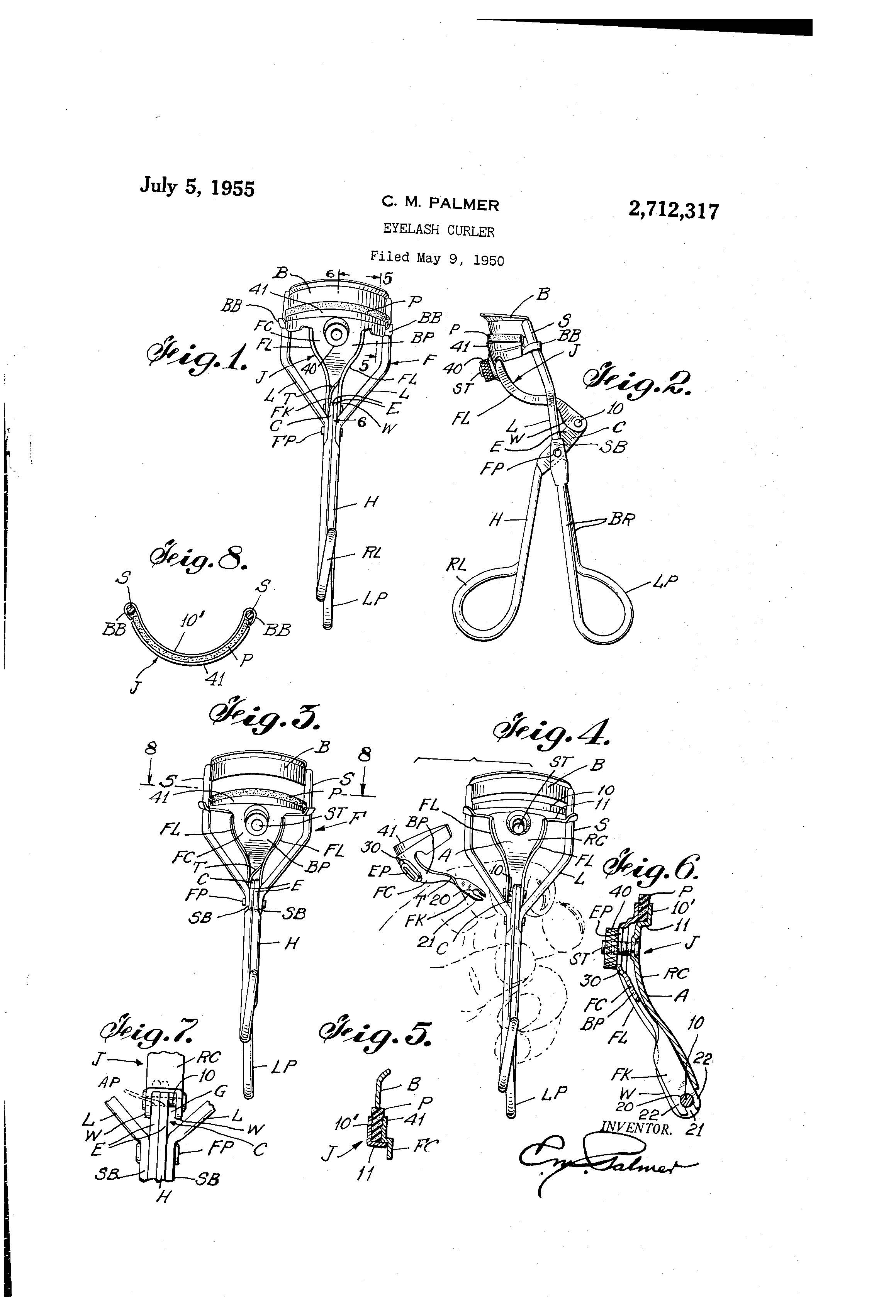
Patent of the Day: Bifocal Lens
Suiter Swantz IP takes a look back at past inventions and inventors with our Patent of the Day.
On this day in 1914, Andrew Jay Cross, was granted U.S. Patent No. 1,102,008 for a BIFOCAL LENS.
An excerpt from the patent states:
The invention relates to improvements in bifocal lenses, and the general object of the invention is to produce a bifocal lens for glasses and spectacles which is of simple construction, graceful appearance, and in which the close vision or reading member of the lens has a much greater area than usual in bifocal lenses, this being accomplished in a way which does not appreciably reduce the distance area of the lens.
Heretofore the general practice in the construction of bifocal lenses has been to cement or fasten to the distance glass a positive segment which provides the close vision or reading member of the lens. This positive or close vision segment has been constructed in a single curve, for the reason that mechanical difficulties of grinding are so great as to render it practically impossible to give to the added segment a shape which would result in a compound curve, and give to the lower edge of the glass or close vision segment a substantially wider vision. Where lenses are made, however, as disclosed in Letters Patent of the United States No. 1,063,421, issued to me on the 3rd of June, 1913, it is comparatively easy to give this wider area to the reading or close vision member, and it is also possible to accomplish this result, though not in so perfect a manner, by what is called solid grinding, that is by grinding a single glass so that the major or upper portion shall be adapted for distance vision, and the lower portion for close vision. I have found that by leaving the middle portion of the close vision member substantially as usual, but by widening the exposed portion of said member at its lower edge, very satisfactory results are obtained, and the user of the lens has a much wider range of vision through the close vision member than has heretofore been possible. This makes the glasses in which such lenses are used, far more comfortable and efficient, especially when the lenses are monocentric, as disclosed in my patent above referred to.
Suiter Swantz IP is a full-service intellectual property law firm, based in Omaha, NE, serving all of Nebraska, Iowa and South Dakota. If you have any intellectual property questions or need assistance with any patent, trademark or copyright matters and would like to speak to one of our patent attorneys please feel free to contact us.
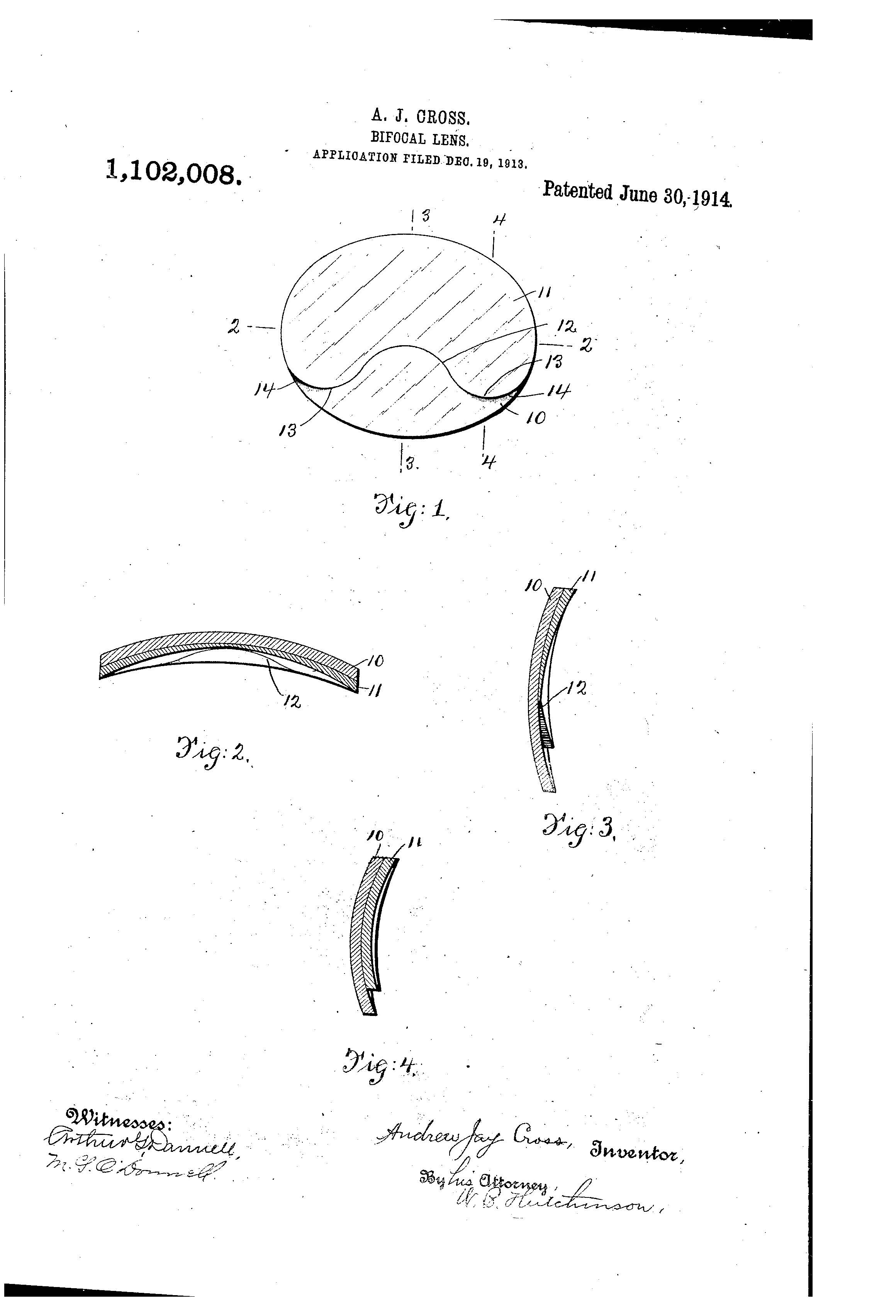
Patent of the Day: Lunar Landing Flight Research Vehicle
Suiter Swantz IP takes a look back at past inventions and inventors with our Patent of the Day.
On this day in 1965, Hugh L. Dryden, the deputy administrator of the National Aeronautics and Space Administration, was granted U.S. Patent No. 3,191,316 for a LUNAR LANDING FLIGHT RESEARCH VEHICLE.
An excerpt from the patent states:
The invention described herein may be manufactured and used by or for the Government of the United States of America for governmental purposes without the payment of any royalties thereon or therefor.
This invention relates to a flight research vehicle employed for the purpose of simulating lunar landings Where gravitational influences are approximately one-sixth those on earth, and aero-dynamic forces are substantially non existent, and more particularly this invention relates to a lunar landing flight research vehicle which includes: (a) a main lift engine having more than an adequate amount of thrust to overcome five-sixths of the earth gravity, (b) main lift rockets for countering the remaining one-sixth earth gravity so that a realistic simulation of lunar approach, hovering and touchdown may be achieved, (c) vehicle attitude controls for controlling the the attitude of the vehicle, including vehicle tilt during horizontal translation which is a maneuver required of an actual lunar landing vehicle, (d) engine attitude controls for controlling the attitude of the engine so the latter is in a substantially vertical position at all times to properly counteract earth gravity, (e) landing gear structure which is so disposed as to provide a realistic lunar landing touchdown and which provides for avoiding vehicle capsizing during lateral translation and touch down, (f) safety and recovery system for recovering the vehicle pilot and vehicle with a minimum of harm and damage in the event catastrophic events occur which threaten either the pilot or vehicle or both and (g) a cockpit and cockpit display positioned on the vehicle so as to provide a reasonable representation of conditions occurring in a lunar vehicle. The foregoing structure and equipment when considered in combination is for the purpose of exploring and solving the hereinafter identified problems involved in making an actual lunar landing, and which will evaluate pilot ability and contribute to pilot training.
The lunar exploration program will encounter new and unusual environments which are unfamiliar and foreign to our presently developed knowledge of flight operations. Typical of the problems to be encountered is the lunar approach, hover and touchdown. For conventional air breathing aircraft a vast amount of information and knowledge is available, but for lunar landing craft no such information and knowledge exists.
Two characteristics of the lunar environment are basic to the design of a free flight vehicle which can simulate lunar landing trajectories on earth. First, the low lunar gravity, which is about one-sixth that of earth, and second, the lunar atmospheric pressure, which is about 10-13 mm. of mercury and causes no appreciable aerodynamic forces on the lunar landing vehicle. For realistic earth simulation, a free flight test vehicle should provide first a means of reducing the effects of earth gravity while preserving similarity of vehicle mass and moment of inertia, and second, a means of balancing aerodynamic forces so that the vehicle appears to operate in a vacuum environment. In providing this situation, the test vehicle should not itself introduce unrealistic side effects. This can be accomplished only be designing the research test vehicle in a manner so that the attitude of the thrust vector which balances earth gravity and aerodynamic drag can be adjusted independently of the attitude and motion of the basic vehicle. The response of the vehicle to attitude controls and rocket lift engines is then preserved and realistic flight situation can be simulated.
Because of the two aforementioned characteristics of the lunar environment, a number of problems are presented which require solution and which are: (1) control with no aerodynamic damping, (2) effects of low lunar gravity, (3) pilot position visibility, (4) control system characteristics, (5) determination of pilot landing display parameters and their instrumentation, (6) landing tip over problems due to low gravity, (7) control of vehicle translation, (8) control of lift rockets, (9) control of attitude rockets, and other problems of equal if not greater importance.
Suiter Swantz IP is a full-service intellectual property law firm, based in Omaha, NE, serving all of Nebraska, Iowa and South Dakota. If you have any intellectual property questions or need assistance with any patent, trademark or copyright matters and would like to speak to one of our patent attorneys please feel free to contact us.

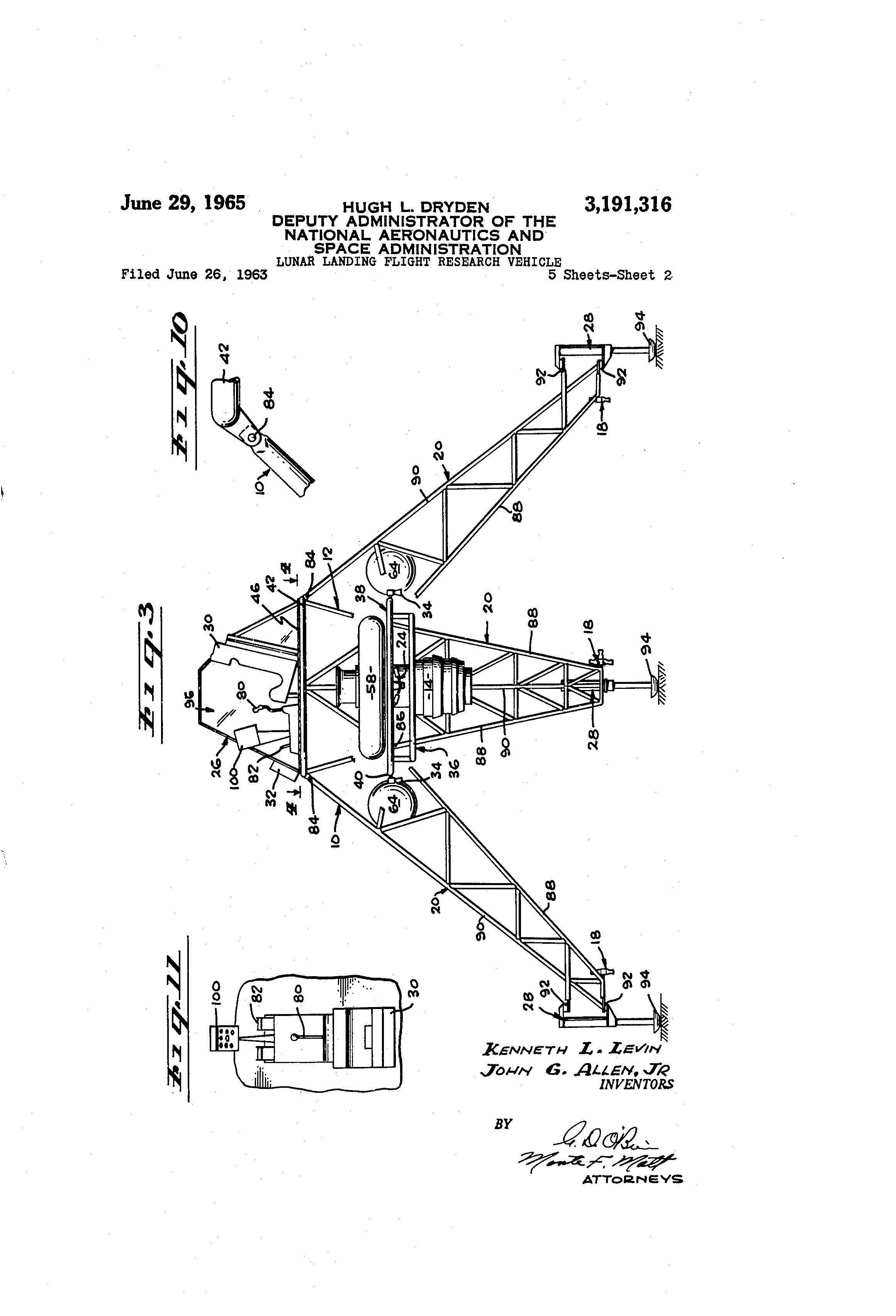
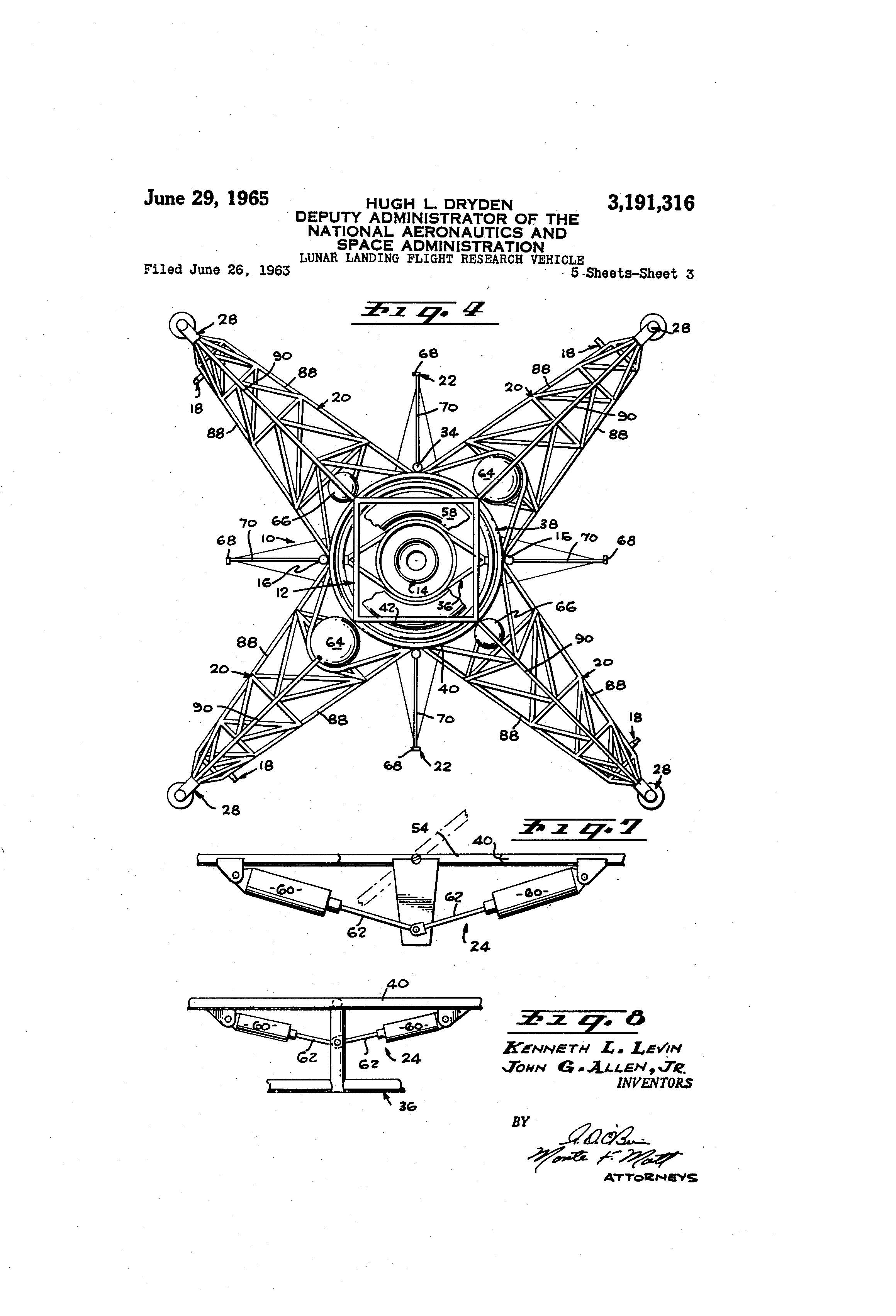
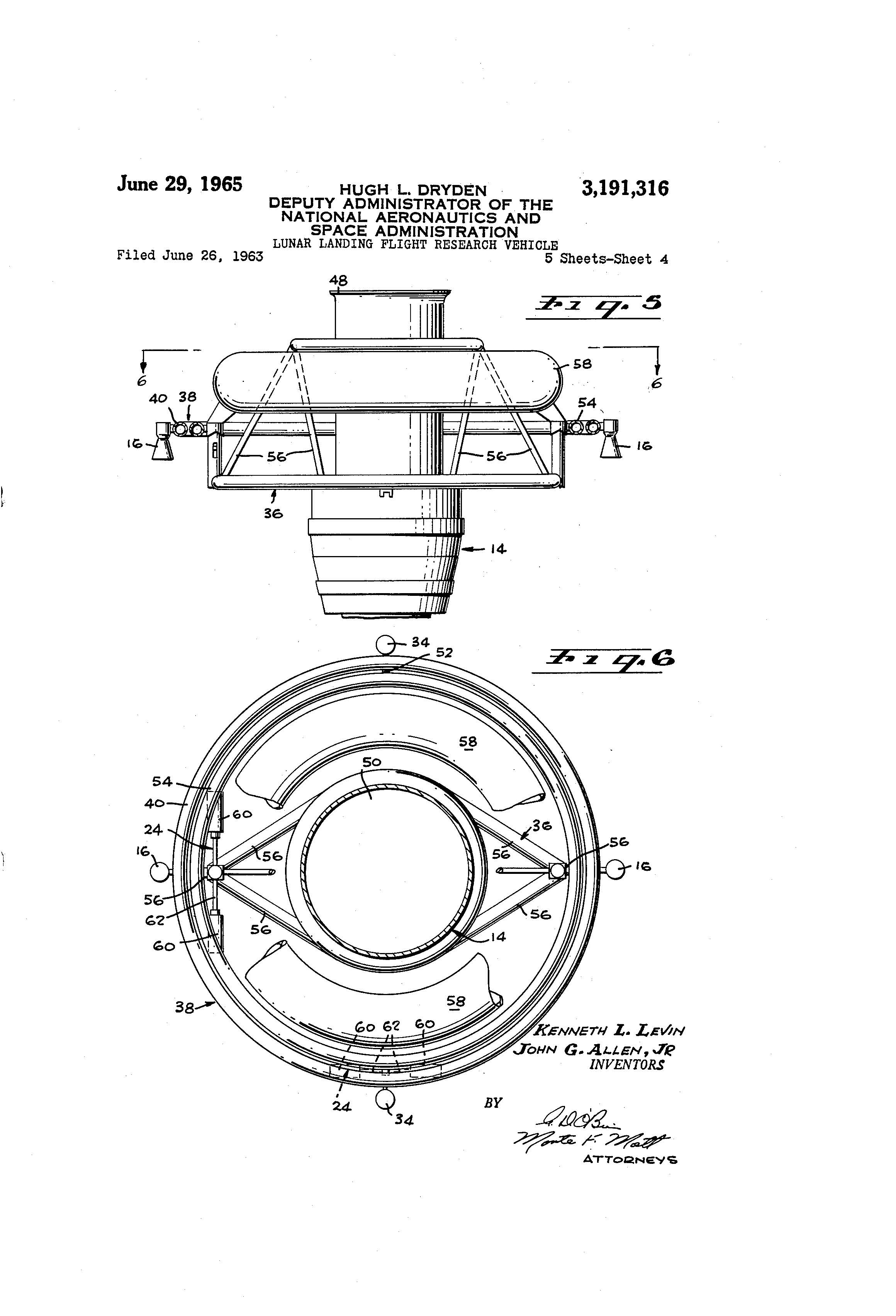
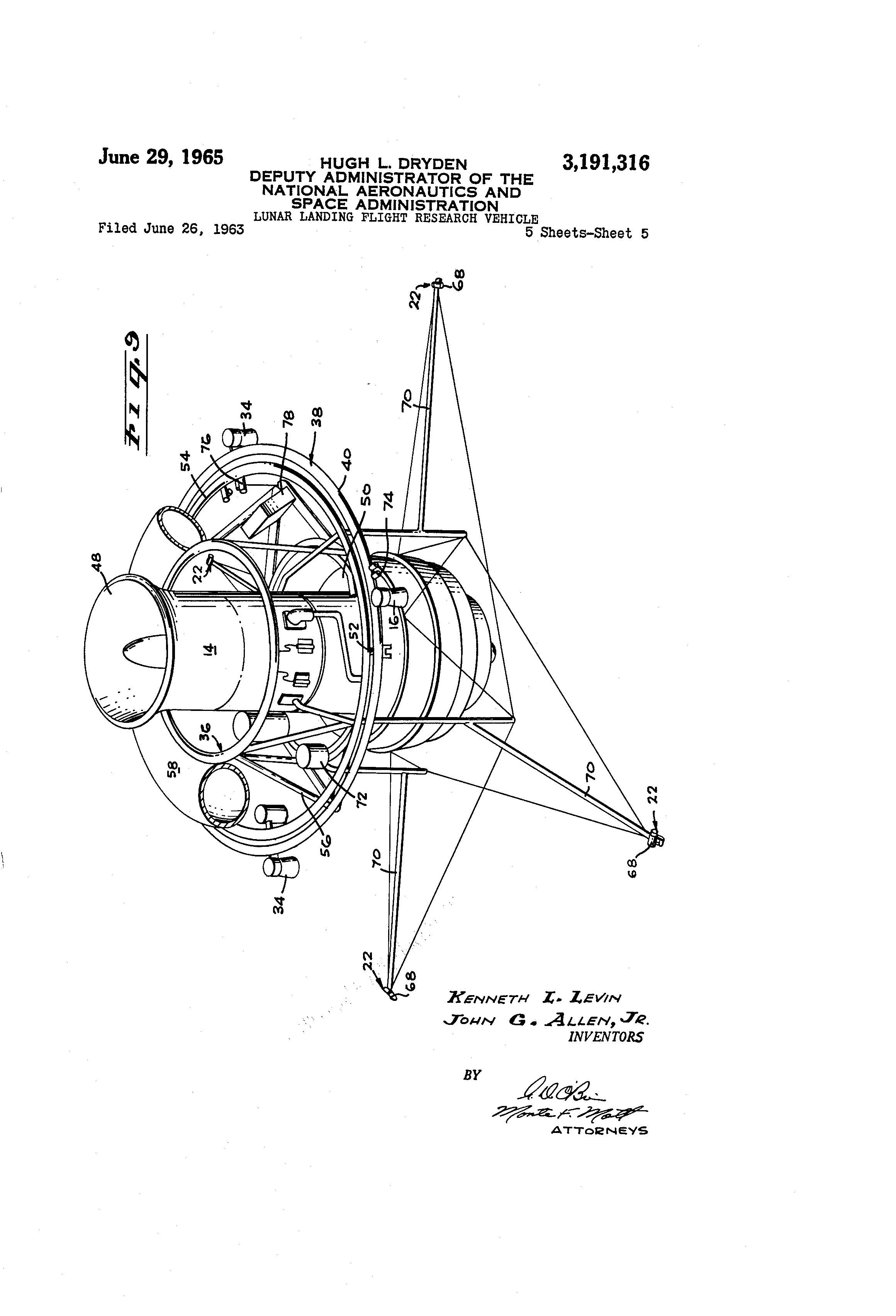
Has the Term Google Become Generic?
What do escalators, aspirin, thermos, and videotape have in common? They were once trademarked but lost their legally protected status because they became too generic. Fortunately, for Google, their name will not appear on that list anytime soon. The Ninth Circuit of Appeals ruled on May 16, 2017, that Google has not become generic and their trademark is still an enforceable brand for an online search engine.
The case originated when Chris Gillespie registered 763 domain names involving a person or a brand paired with the word “google”, for example, “googledisney.com” and “googlebarackobama.com.” Google objected to the registrations and filed a complaint arguing that Gillespie was cybersquatting; registering names, specifically well-known company/brand names, in hopes of selling them for a profit. Google was able to get the domain names transferred back to them, but Gillespie and partner David Elliott filed a joint lawsuit against Google “for cancellation of the GOOGLE trademark under the Lanham Act, which allows cancellation of a registered trademark if it is primarily understood as a ‘generic name for the goods or services, or a portion thereof, for which it is registered.’” 15 U.S.C. § 1064(3).
Some experts believe that Google could potentially lose their trademark protection by becoming too popular of a term. Generic references to a trademark are against the intentions of the brand owner and can have a devastating effect on the brand because marks that are merely generic are not subject to trademark protection.
When a trademark is used generically, a trademark owner may have to take aggressive measures to retain exclusive rights to the mark. Google has taken such steps to protect their trademark. For example, they discourage publications from using the term ‘googling’ in reference to web searches and send cease and desist letters to those infringing on their trademark.
The court ruled in favor of Google and they will retain their trademark, even if the term “google” has become synonymous with internet searches. According to court documents, “even if we assume that the public uses the verb ‘google’ in a generic and indiscriminate sense, this tells us nothing about how the public primarily understands the word itself, irrespective of its grammatical function, with regard to internet search engines.”
Gillespie and Elliott presented evidence that suggested Google had become a common phrase meaning to look something up on the internet. However, the court determined that “Elliot has failed to present sufficient evidence to support a jury finding that the relevant public primarily understands the word ‘google’ as a generic name for internet search engines and not as a mark identifying the Google search engine in particular.”
The court cited a previous case, Softbelly’s Inc., 353 F.3d at 531, that trademark loss from becoming generic occurs when the name has become an “exclusive descriptor” that makes it difficult for a competitor to compete unless they use that name.
The decision stated that “[b]ecause not a single competitor calls its search engine ‘a google,’ and because members of the consuming public recognize and refer to different ‘internet search engines,’ Elliott has not shown there is no available substitute for the word ‘google’ as a generic term.”
This case further held that verb use of a trademark “does not automatically constitute generic use. The sliver of potentially relevant evidence purporting to show that the public uses the verb “google” to refer to searching the Internet with any search engine (as opposed to Google’s search engine in particular) is too insubstantial to save the plaintiffs’ case.”
The Ninth Circuit’s decision in Google’s favor will be seen as a win for prominent brand owners who are at risk of becoming victims of their own success.
Suiter Swantz IP is a full-service intellectual property law firm based in Omaha, NE, serving all of Nebraska, Iowa, and South Dakota. If you have any intellectual property questions or need assistance with any patent, trademark, or copyright matters and would like to speak to one of our patent attorneys please feel free to contact us.
Patent of the Day: Edible Pharmaceutical Inks
Suiter Swantz IP takes a look back at past inventions and inventors with our Patent of the Day.
On this day in 1966, James Carroll Brown were granted U.S. Patent No. 3,258,347 for EDIBLE PHARMACEUTICAL INKS.
An excerpt from the patent states:
This invention relates to the production of certain ink compositions suitable for marking pharmaceutical tablets. , More specifically, the invention is directed to shellac based ink compositions particularly suitable for printing of ink indicia on pharmaceutical tablets having a wax coated medicinal core and to a process for utilizing said ink compositions.
The importance of providing pharmaceutical tablets with a clearly visible identifying marking to prevent spurious imitations and substitutions is well illustrated by the significant volume of business which has been lost by some manufacturers because of such imitations and substitutions.
For purposes of this invention the coated medicinal core is defined as a medicinal core covered with successive undercoats, smoothing coats, and suitably colored finish coats. The smoothing and finishing coats consist primarily of grossing powders and coating syrups to give the tablet a smooth outer surface which is designated in the pharmaceutical art as a sugar coating.
Frequently, the printing of ink indicia on a sugar-coated tablet is accomplished by applying a confectioner’s shellac coating over the sugar coating and then imprinting on the shellac coating with an ink having a shellac base. Due to the presence of shellac in both the ink and the coat the ink adheres tenaciously to the coat to product an acceptable product. However, the nature of the shellac surface is considered undesirable by many pharmaceutical manufacturers in view of its lack of polish or luster. In addition, because of the tackiness of the shellac coating it tends to stick to the wall of the coating pan during the coating process and to pull off the sugar coating around the medicinal core. Also, the tacky character of shellac coated tablets presents a handling problem. For ex ample, such tablets do not readily flow into and do not readily seat properly in accommodating recesses in the printing machine.
In an effort to combat the aforementioned difficulties many manufacturers have considered it desirable to apply a wax coating, for example of carnauba wax, to each tablet, such coating being capable of taking on a high polish. In this manner the tablet is provide with a very desirable free-sliding or flowing character, and the desired pharmaceutical elegance is imparted to the tablet. However, the wax coating has not proved entirely satisfactory in that conventional shellac-based inks will not readily adhere to the waxy surface and the markings have a tendency to rub off even after drying on the waxed surface.
Accordingly, it is a primary object of the present invention to provide a shellac-based ink composition which does not have the disadvantages of the prior art compositions. Another object of this invention is to provide a shellac based ink composition containing ingredients approved for use in an edible food composition. Still another object of this invention is to provide a shellac-based ink composition which will effectively ad here to a waxed sugar coated pharmaceutical tablet to give a clear and legible marking which cannot be easily obliterated. Yet another object of this invention is to provide a shellac-based ink composition suitable for imprinting on a Wax-coated pharmaceutical tablet and a process for applying an ink indicia to said wax-coated tablet.
Suiter Swantz IP is a full-service intellectual property law firm, based in Omaha, NE, serving all of Nebraska, Iowa and South Dakota. If you have any intellectual property questions or need assistance with any patent, trademark or copyright matters and would like to speak to one of our patent attorneys please feel free to contact us.
Patent of the Day: Monocycle
Suiter Swantz IP takes a look back at past inventions and inventors with our Patent of the Day.
On this day in 1899, Louis Schutte were granted U.S. Patent No. 627,596 for a MONOCYCLE.
An excerpt from the patent states:
The invention relates to the construction of a monocycle, having for its object to provide a new machine of this class and one of simple construction.
Broadly speaking, my invention consists in supporting, through depending arms journaled upon the hub of a single wheel, a frame of frames pivotally depending from the said arms and not otherwise secured thereto, said frames being adapted to support the foot of a rider standing in upright position while the wheel revolves and in providing in addition to this frame means by which the rider can apply power to rotate the wheel, said means consisting, preferably, of pedals connected with cranks attached tot he lower part of the supporting-frame below its connection with the arms and connected also in such manner as to communicated their reciprocating motion into a rotation motion of the wheel.
Suiter Swantz IP is a full-service intellectual property law firm, based in Omaha, NE, serving all of Nebraska, Iowa and South Dakota. If you have any intellectual property questions or need assistance with any patent, trademark or copyright matters and would like to speak to one of our patent attorneys please feel free to contact us.
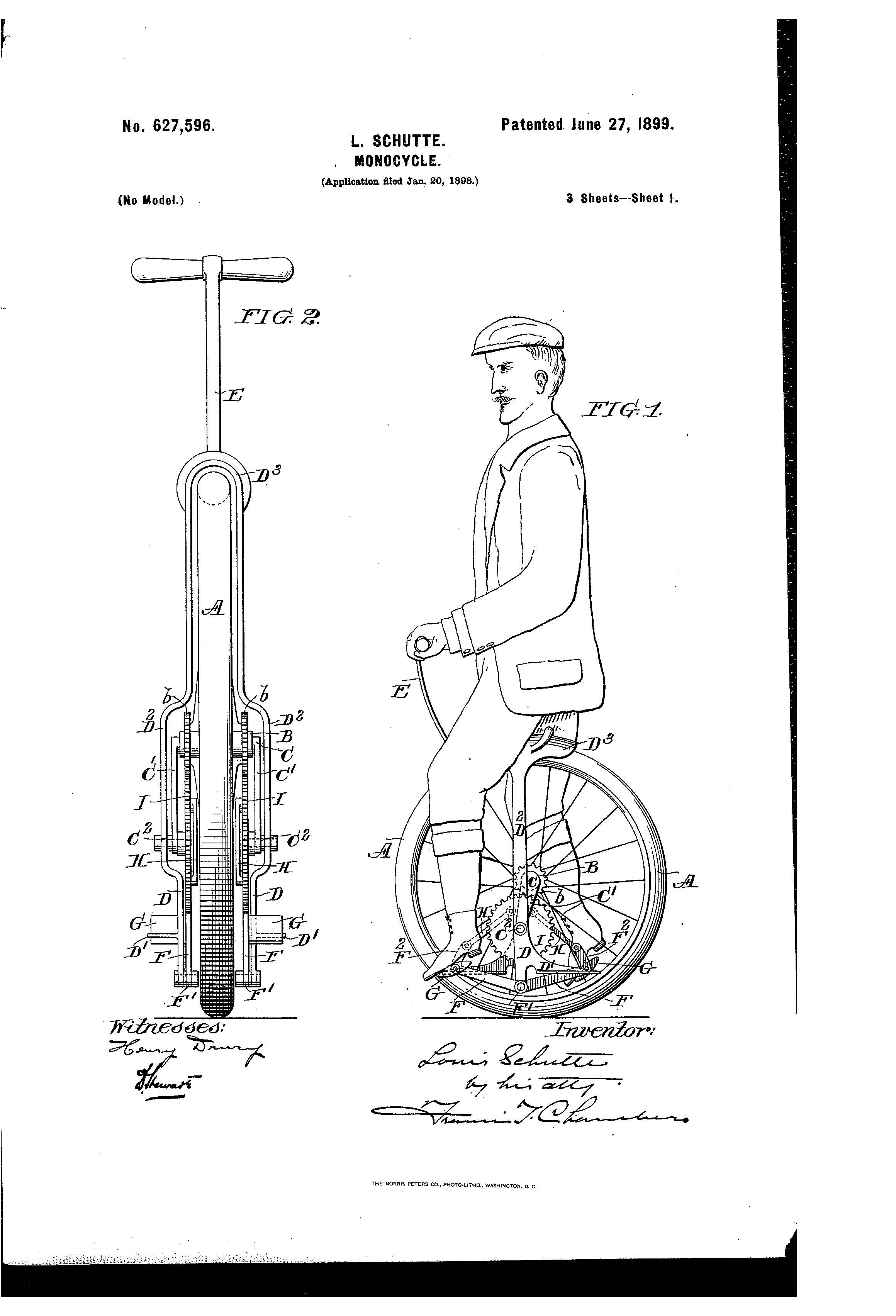
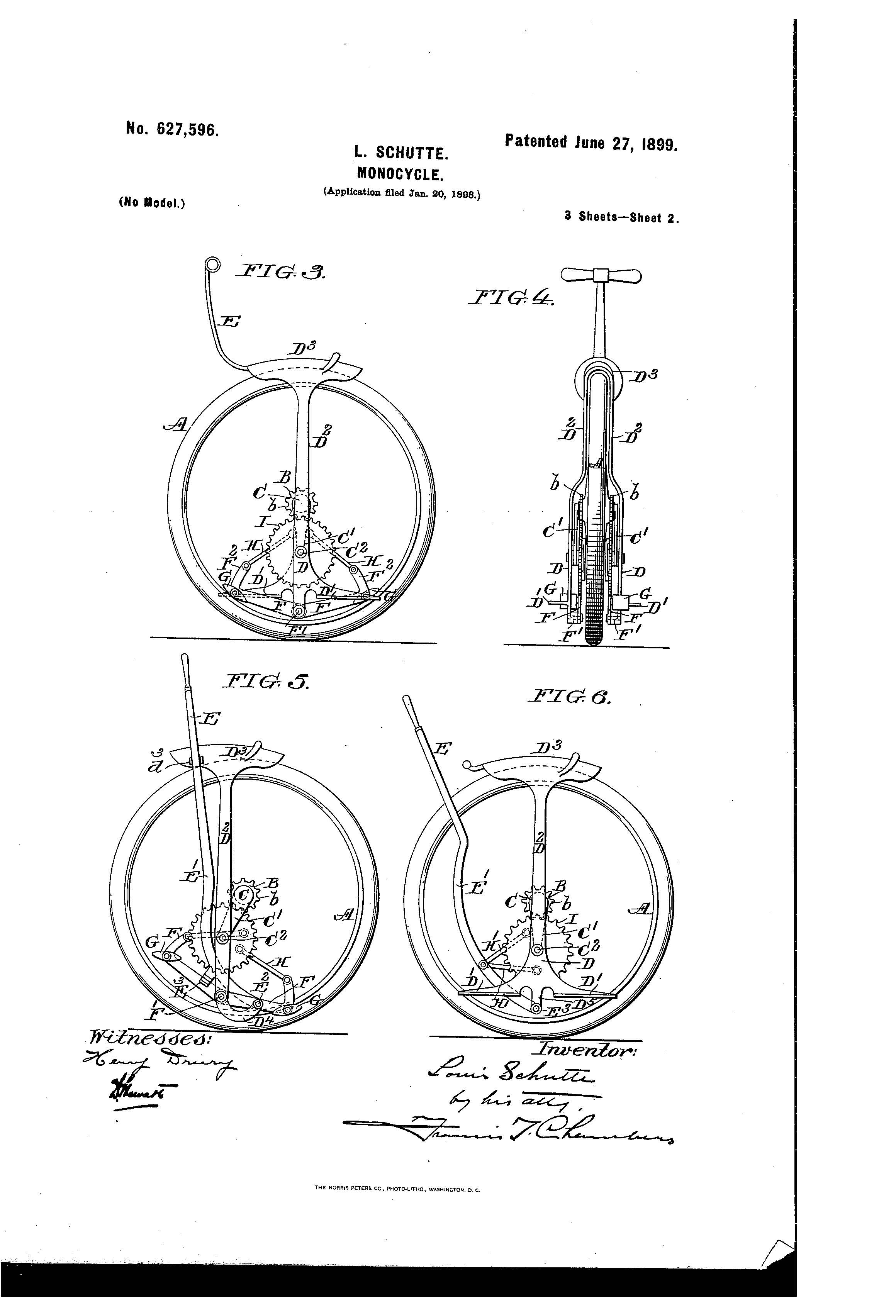
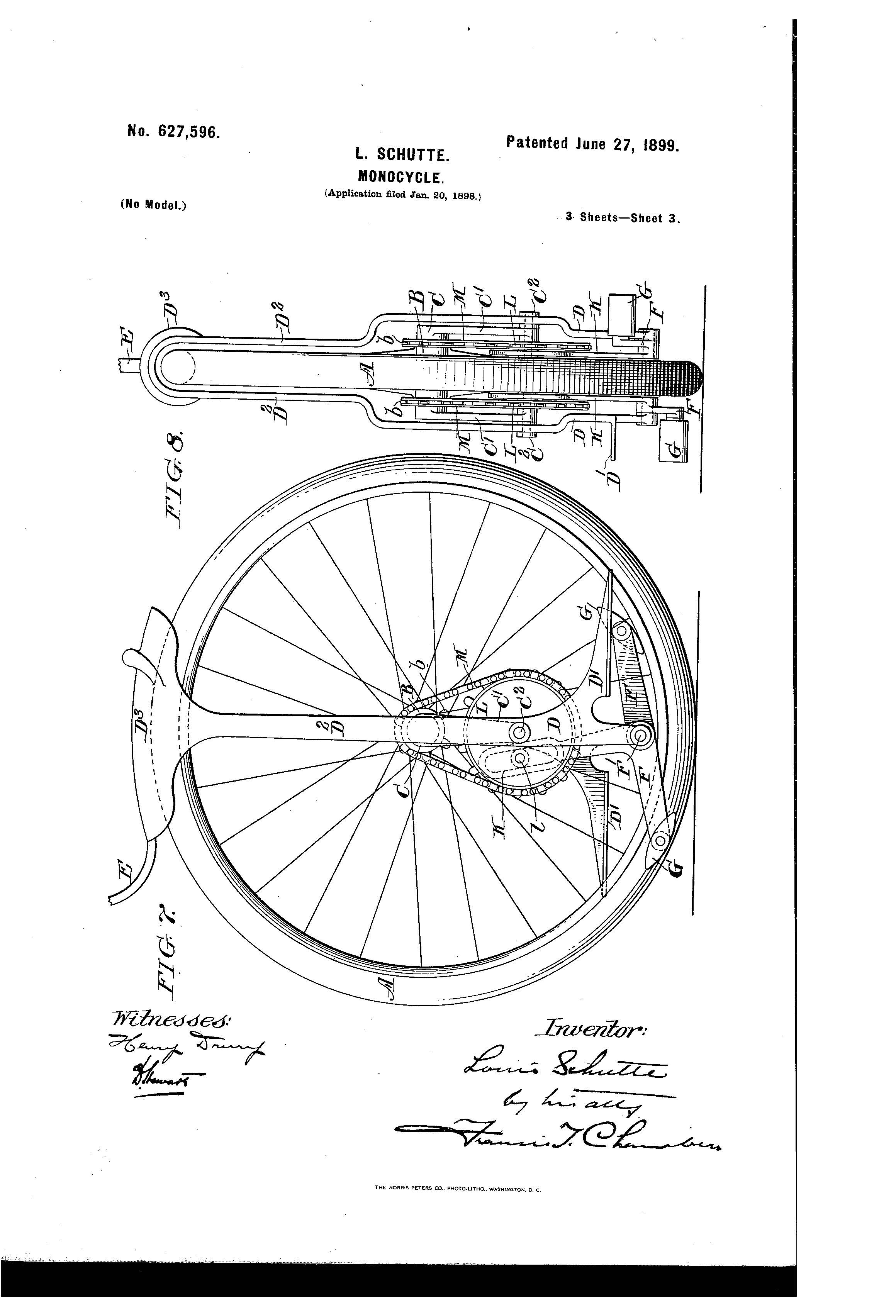
Patent of the Day: Doughnut, Pastry and Cake Filler
Suiter Swantz IP takes a look back at past inventions and inventors with our Patent of the Day.
On this day in 1962, Ira L. Lopata were granted U.S. Patent No. 3,040,935 for a DOUGHNUT, PASTRY AND CAKE FILLER.
An excerpt from the patent states:
This invention relates in general to a machine for automatically delivering pre-determined quantities of a semi liquid material such as jelly, cream, custard, batter, dough, and the like, and more particularly, the invention contemplates a machine of the type that includes a bowl or receptacle for a filling material such as jelly, and a motor—driven measuring and pumping apparatus for drawing the material from the bowl in measured quantities and injecting it through a nozzle into a doughnut, a piece of pastry, a cake, a baking pan, or the like.
A primary object of the invention is to provide a machine of this character which shall embody a novel and improved construction whereby a plurality of the bowls can be easily and instantly interchangeably mounted in the machine so that the machine may be utilized selectively and with a minimum of difficulty and loss of time for handling any desired type or flavor of filling.
Another object of the invention is to provide such a machine which shall include a novel and improved unit comprising a bowl or receptacle and a pump or ejecting means for the filling material, and a novel combination thereof with a main frame or base and motor-operated driving mechanism, whereby the bowl and pump unit, at the will of the operator, can be easily and instantly set on and removed from the base or main frame and connected to and disconnected from a driving shaft, respectively, easily and instantly and without the use of tools, and the amount of filling material ejected from the filling nozzle can be easily and instantly varied as by a mere “flick of the wrist” of the operator.
A further object is to provide in a machine for filling doughnuts, pastry, cakes, baking pans, and the like, a novel and improved combination of a bowl, a positive displacement pump, and filling nozzles which shall eliminate dripping of the filling material from the nozzles after operation of the pump has stopped, which shall positively and smoothly move the filling material from the bowl to the nozzle, which shall be smooth running and practically noiseless, and which can be easily and quickly assembled and disassembled for cleaning, inspection, and repair.
Other objects of the invention are to provide such a machine which shall be light in weight and easily portable, which can be economically operated by a relatively unskilled person and with low power consumption.
Suiter Swantz IP is a full-service intellectual property law firm, based in Omaha, NE, serving all of Nebraska, Iowa and South Dakota. If you have any intellectual property questions or need assistance with any patent, trademark or copyright matters and would like to speak to one of our patent attorneys please feel free to contact us.
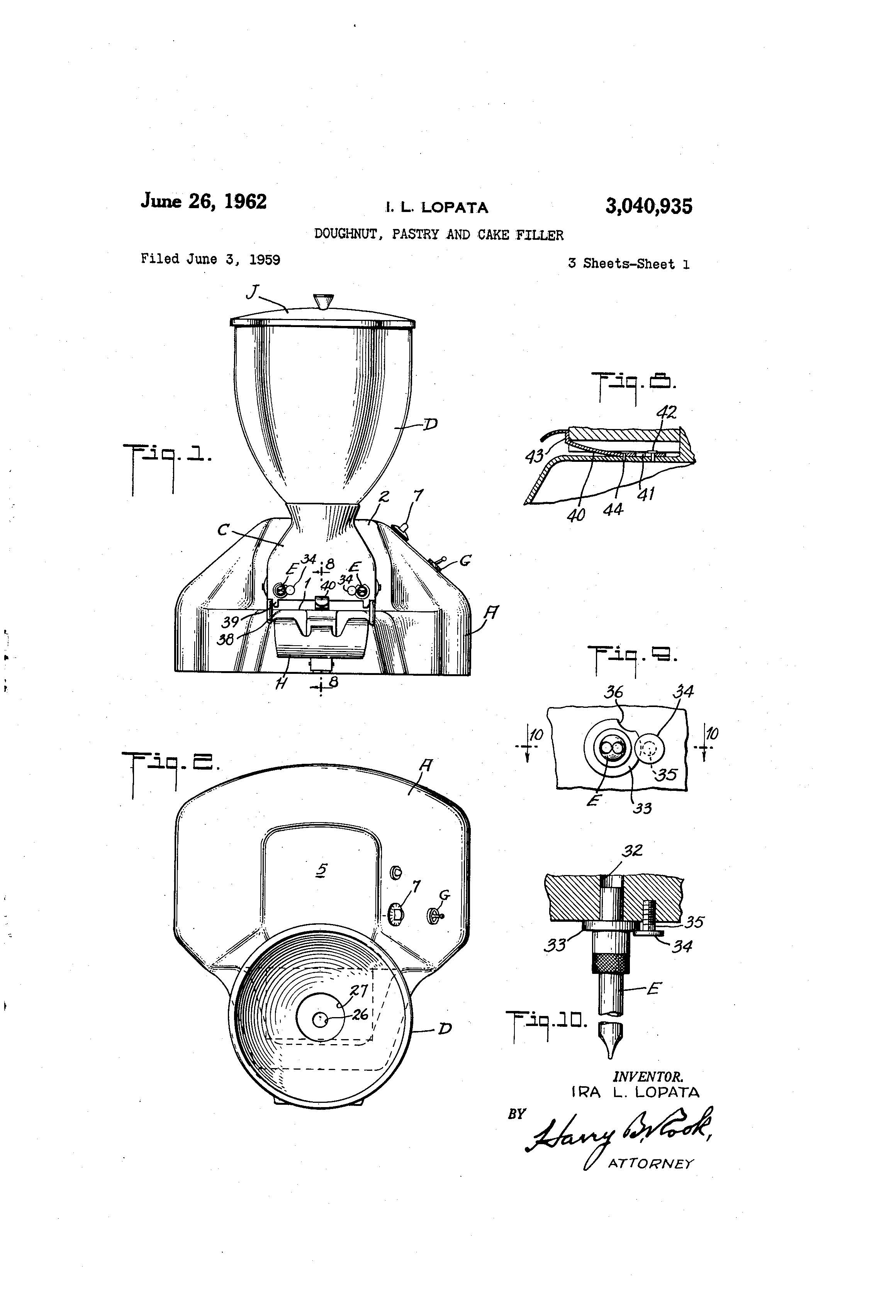
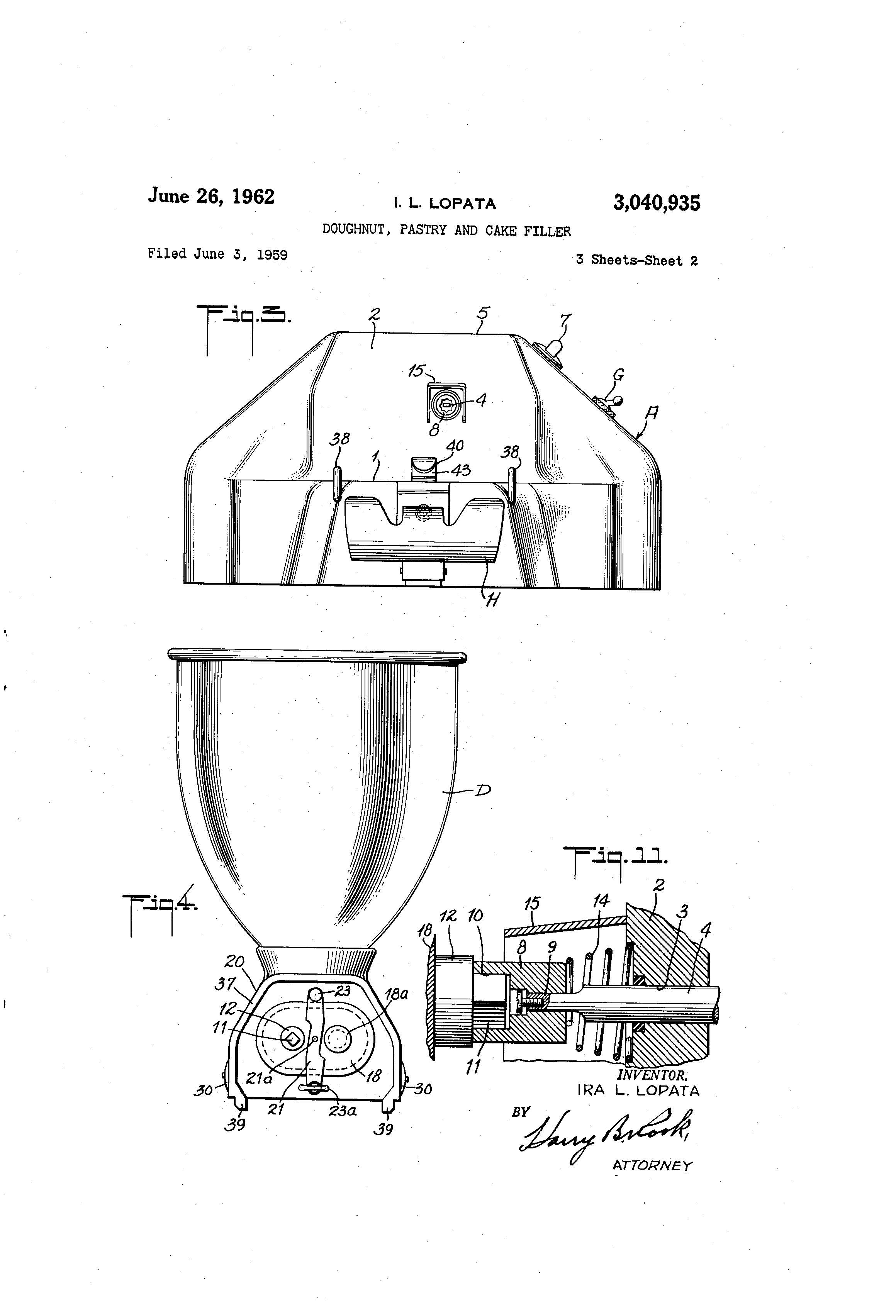
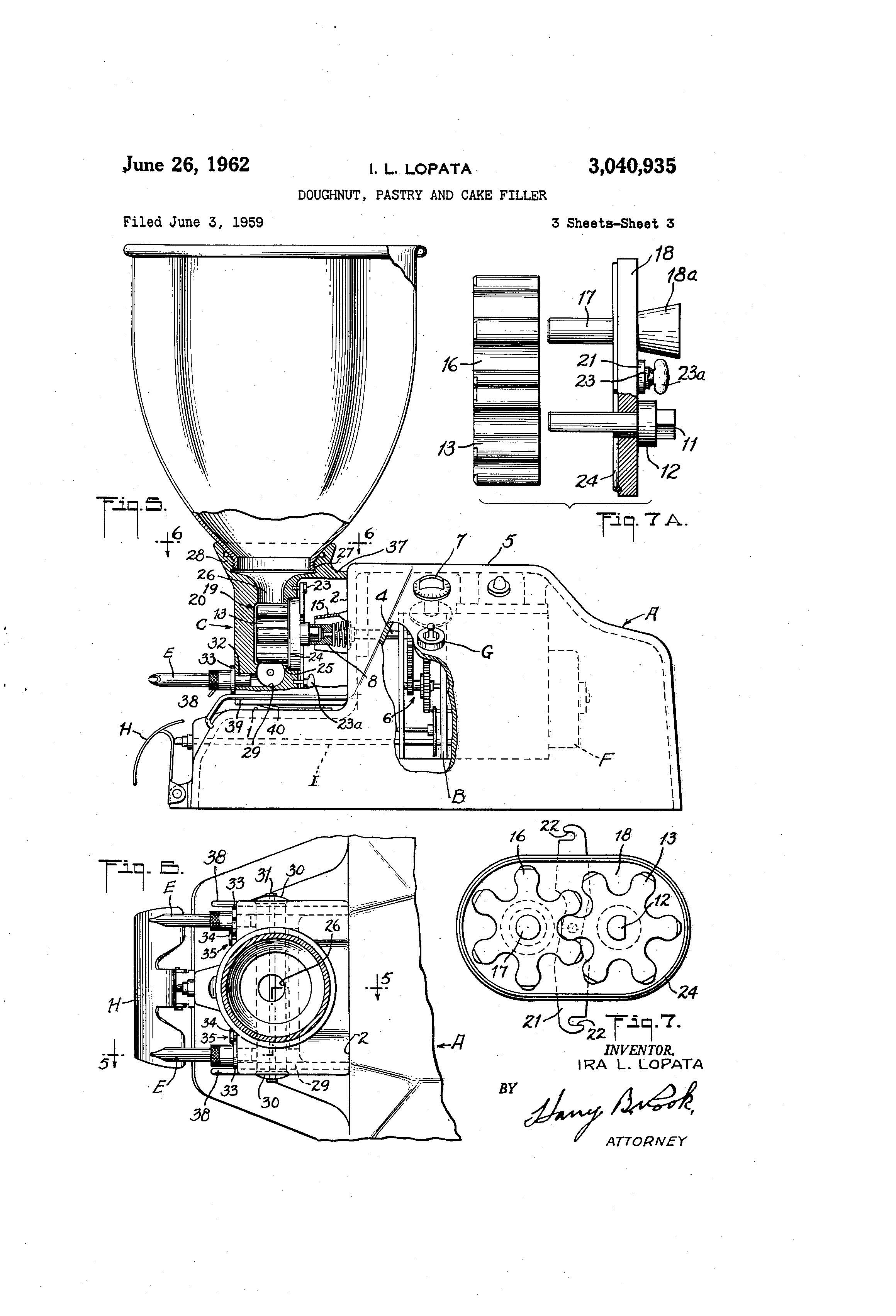
Patent of the Day: Improvement in Type-Writing Machines
Suiter Swantz IP takes a look back at past inventions and inventors with our Patent of the Day.
On this day in 1868, C. Latham Sholes, Carlos Glidden, and Samuel W. Soule were granted U.S. Patent No. 79,265 for a IMPROVEMENT IN TYPE-WRITING MACHINES.
An excerpt from the patent states:
What we claim as new and useful in our invention, and desire to secure by patent, is
1. The key-levers vibrating on the fulcrum with the inner ends or fingers reaching under the type-bars, so that the keys will act directly on the types, substantially as and for the purpose described.
2. The spacer or ratchet, combined with the bifurcated lever connected with the bar pivoted at a point and resting on and across the arms of the keys behind the fulcrum, so that striking the faces of the keys will work the teeth of the forks of the lever up and down and into the notches of the spaces and give a certain uniform and regular space movement to the paper-carriage in line of the types, when made ‘substantially as described.
3. The pins, fastened to the table combined with the pawl and the spring to give the paper-carriage a certain and regular cross-line movement at a right angle to the space movement from line to line, when made substantially as described.
4. The clasps or springs attached to the bars on a line through the middle of the platen combined with the springs attached to the bar to hold the paper to the carriage and press it down smooth and tight in passing under the platen, when made substantially as described.
5. The spools combined with the gudgeon, the shaft, the pulleys, the band, the cord, the weight,the ratchet wheel, the pawl, and the bar, pivoted to the back of the case to feed a fresh part of the inking-ribbon under the platen to each type successively, when made substantially as described.
Suiter Swantz IP is a full-service intellectual property law firm, based in Omaha, NE, serving all of Nebraska, Iowa and South Dakota. If you have any intellectual property questions or need assistance with any patent, trademark or copyright matters and would like to speak to one of our patent attorneys please feel free to contact us.
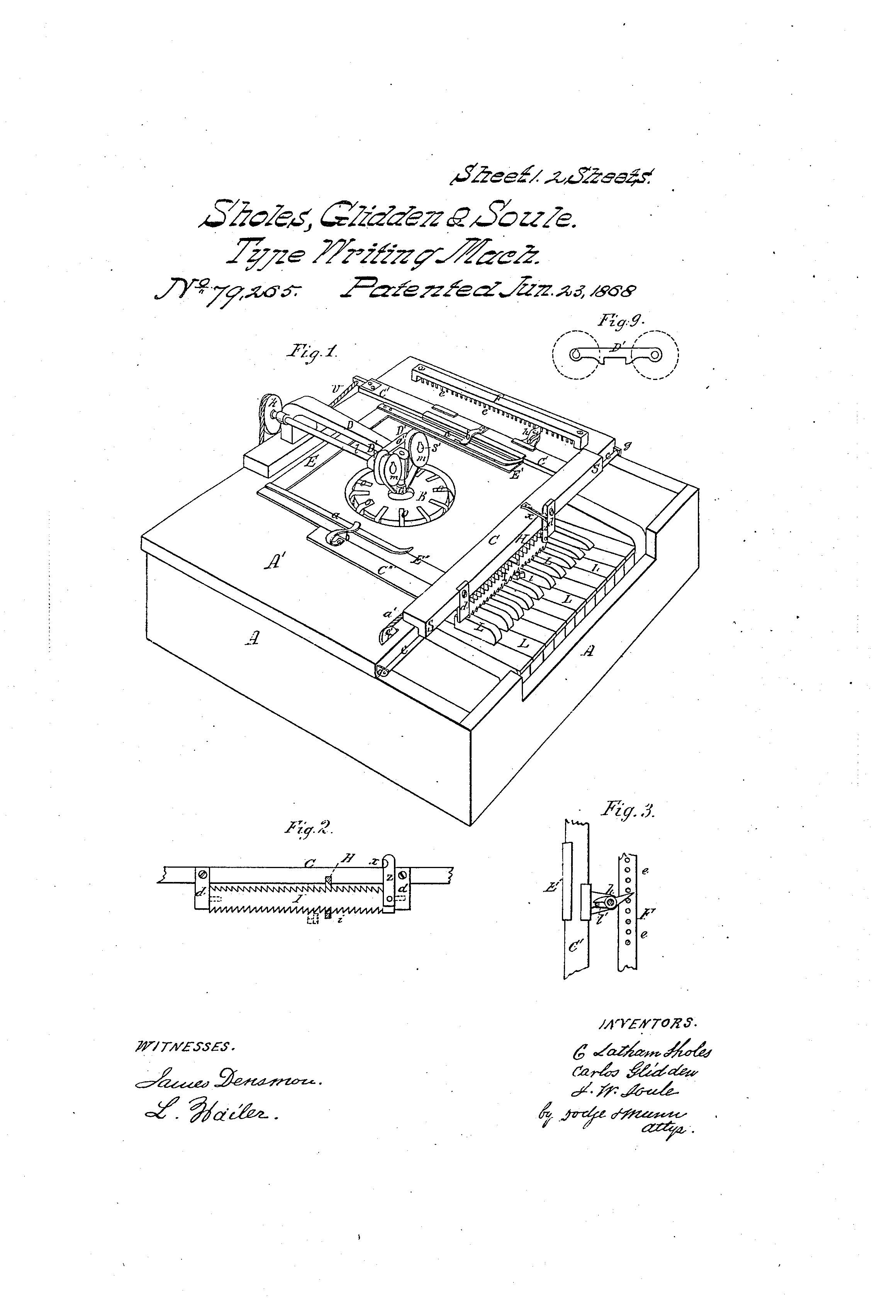
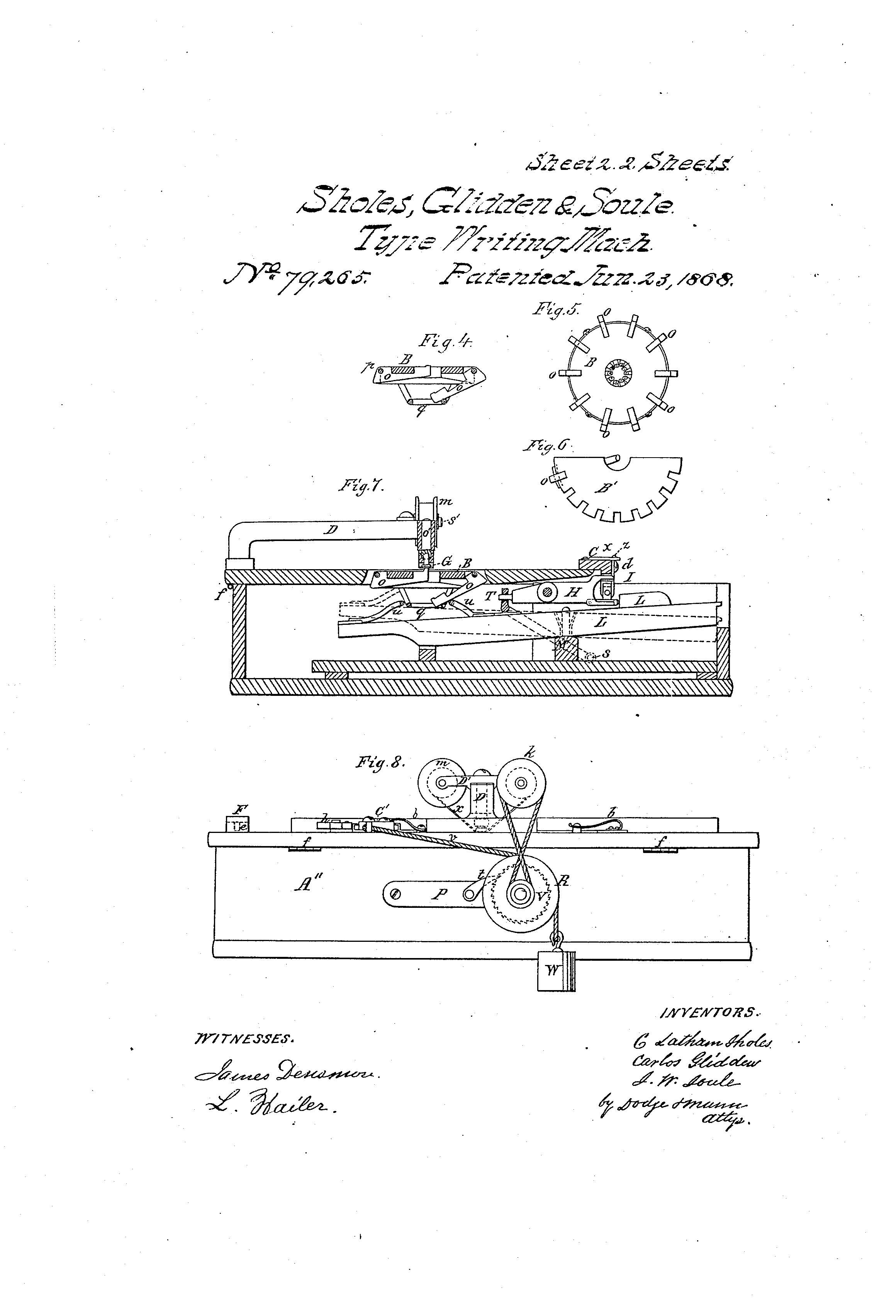
Patent of the Day: Game Card (BINGO)
Suiter Swantz IP takes a look back at past inventions and inventors with our Patent of the Day.
On this day in 1943, Erich Spitzner was granted U.S. Patent No.2,322,324 for a GAME CARD.
An excerpt from the patent states:
The objects of the invention are to provide an improved card or board of the character indicated in which the desired series of numbers or combinations thereof may be printed or permanently affixed directly to the main card, and convenient means provided for covering or marking the numbers as they are called whereby the desired or winning combinations may be shown or indicated; to provide a game card or device which may be manufactured at a minimum expense and which will be durable and efficient in use; to provide a game card having a plurality of numerals or indicia thereon and individual slides for covering the numbers as they are called, and also for showing or indicating the numbers thus covered; to provide a bingo card, or the like, having the numbers printed thereon and having guideways adjacent to the respective numbers with slidable transparent indicators or shutters for temporarily covering the numbers as they are called.
Suiter Swantz IP is a full-service intellectual property law firm, based in Omaha, NE, serving all of Nebraska, Iowa and South Dakota. If you have any intellectual property questions or need assistance with any patent, trademark or copyright matters and would like to speak to one of our patent attorneys please feel free to contact us.
